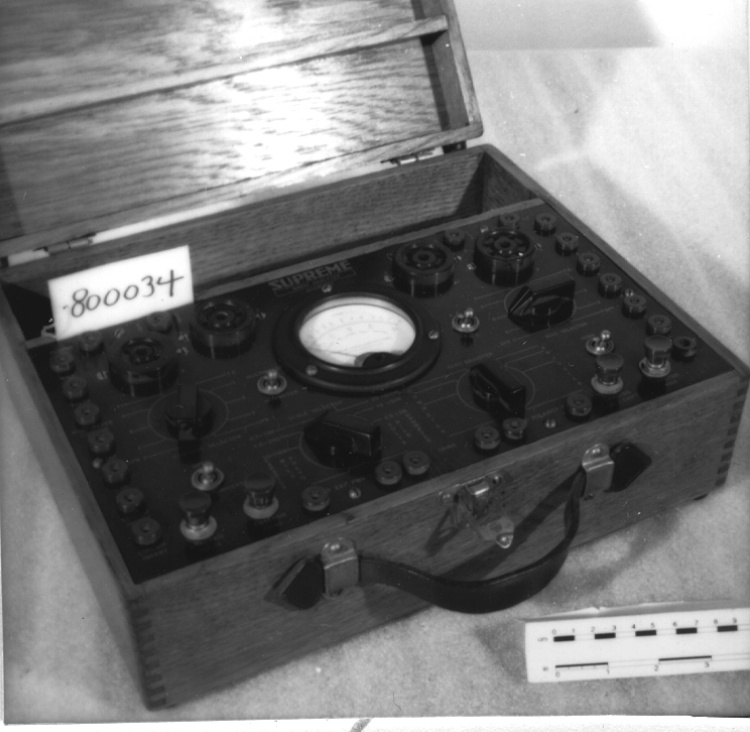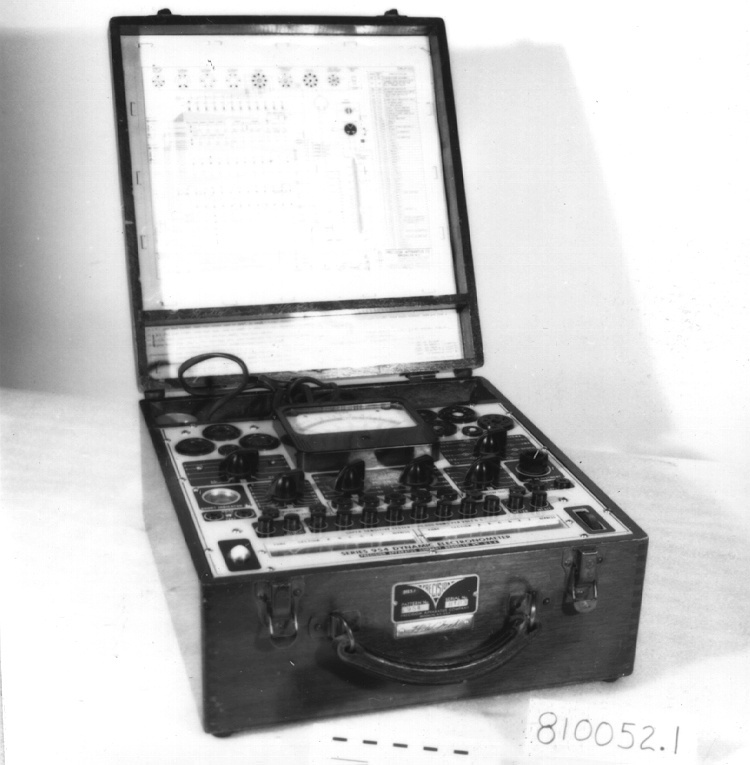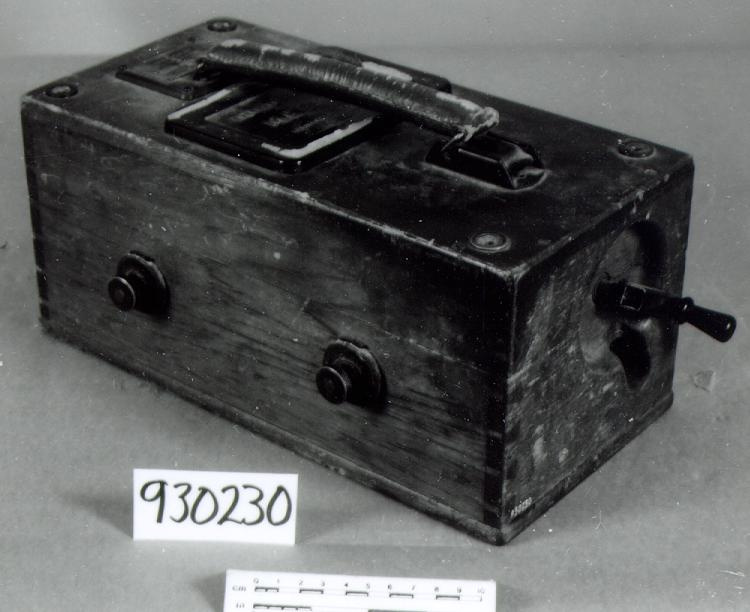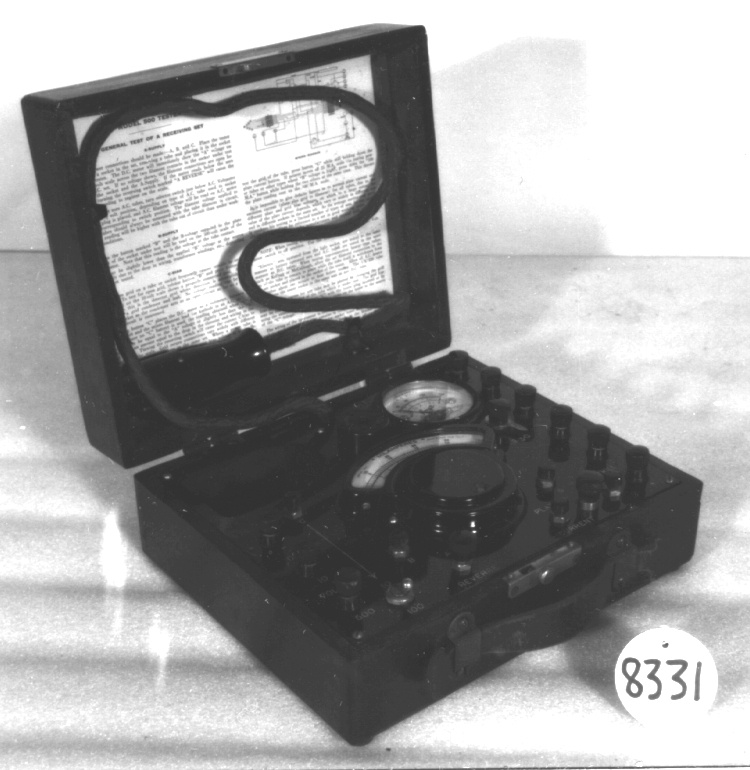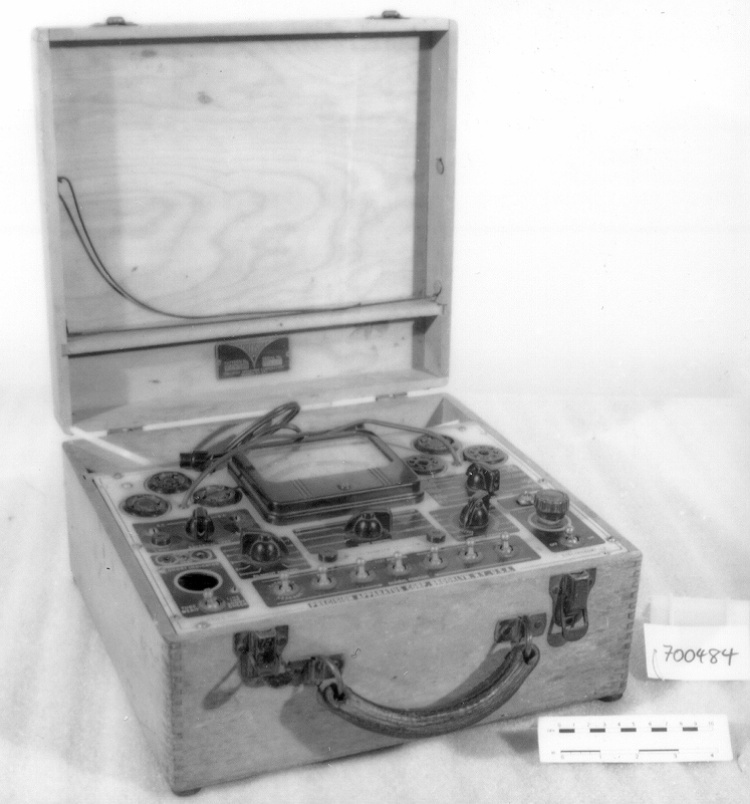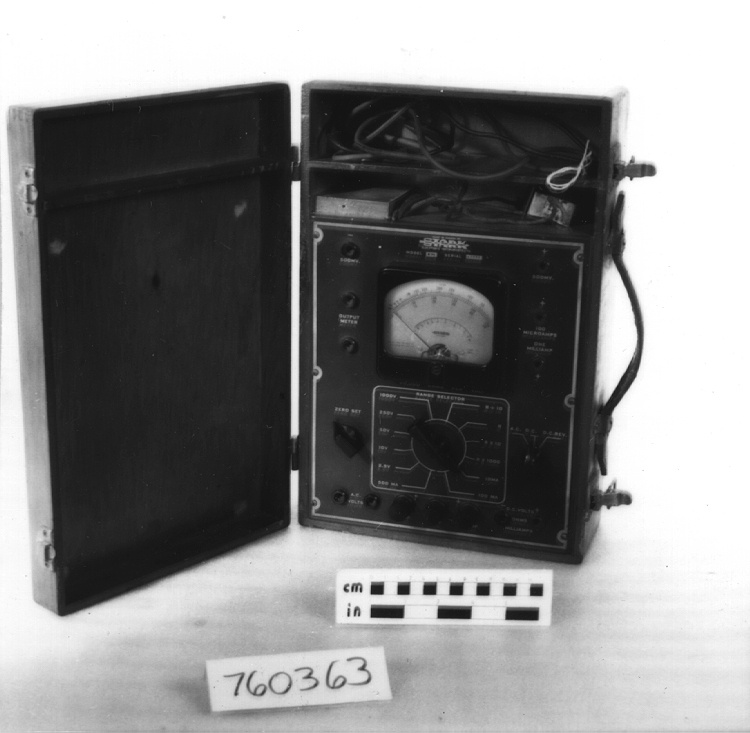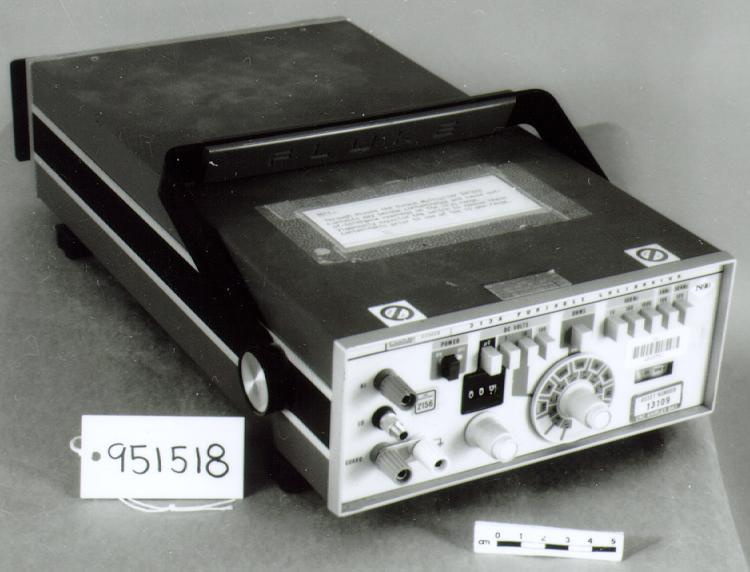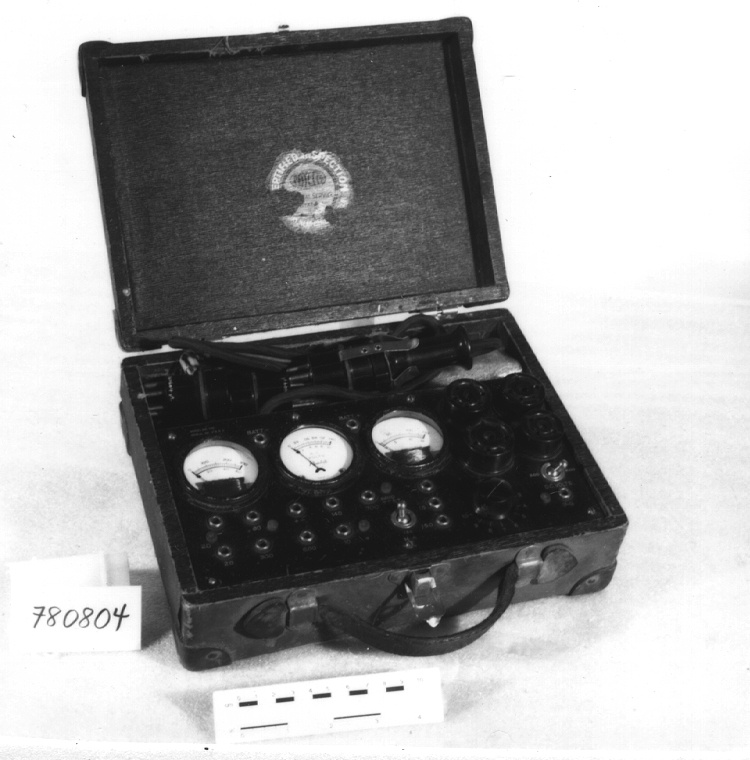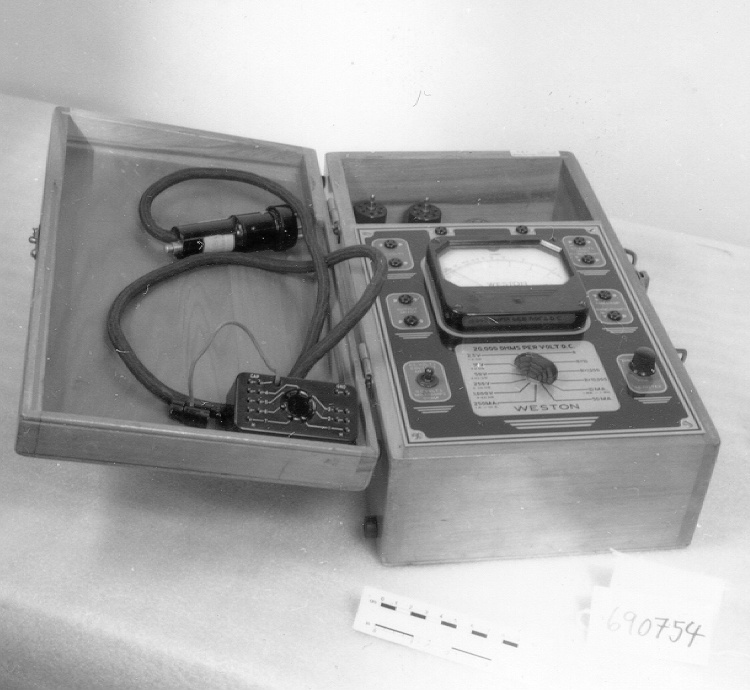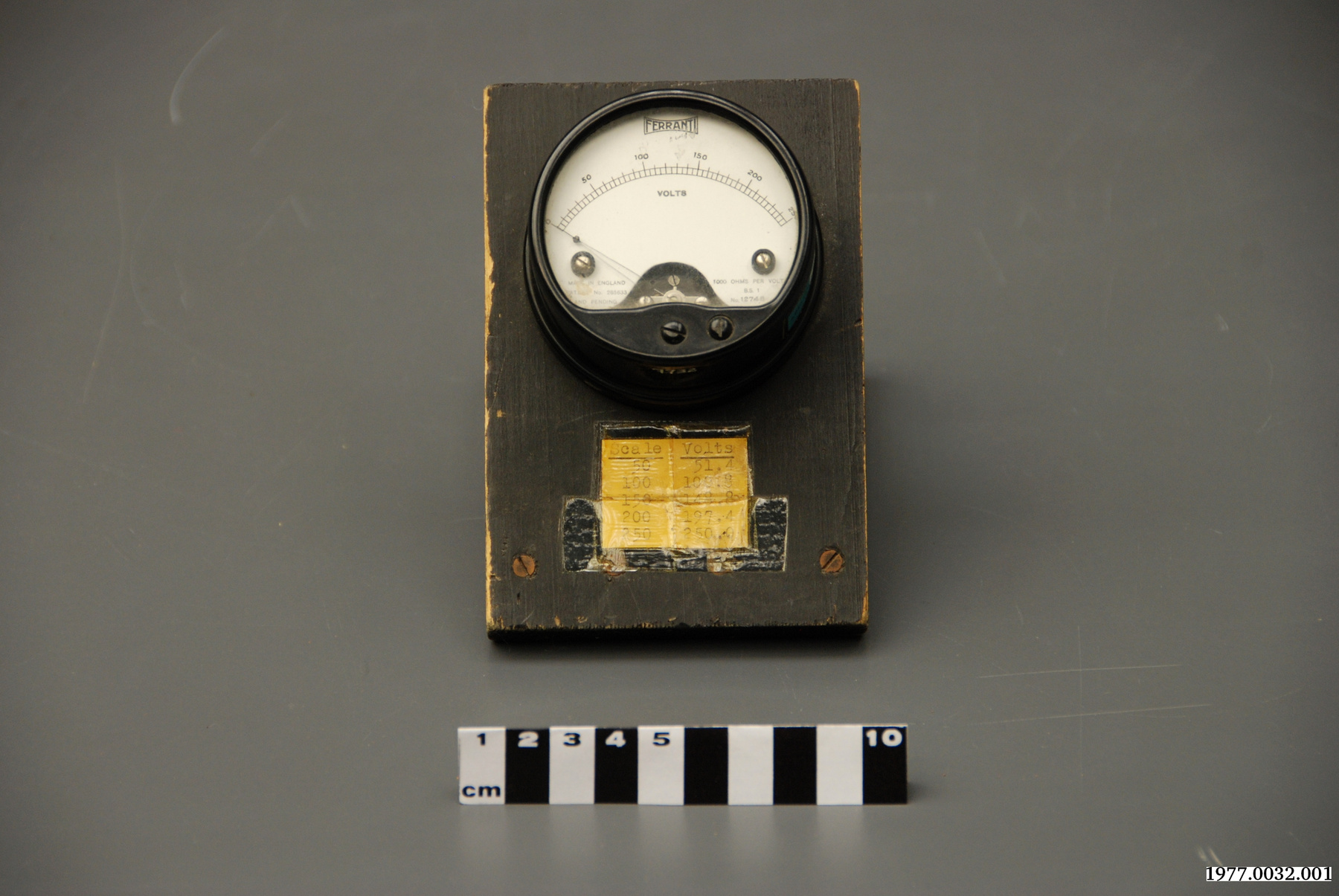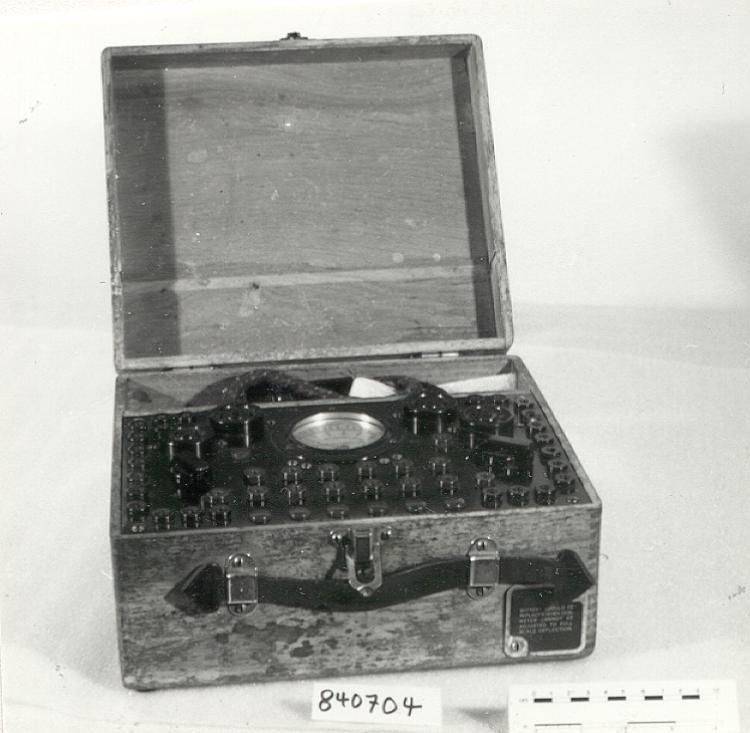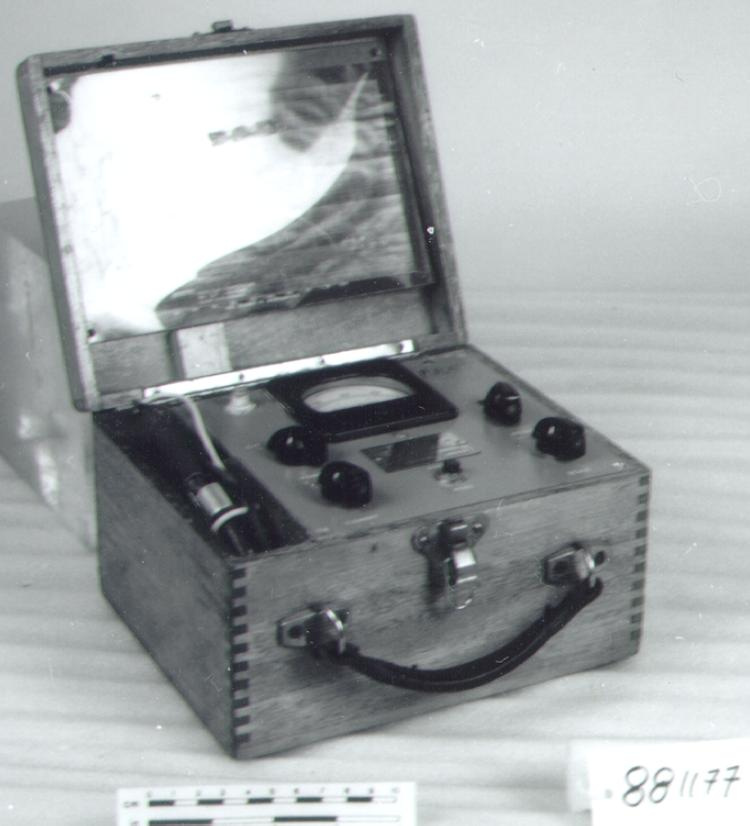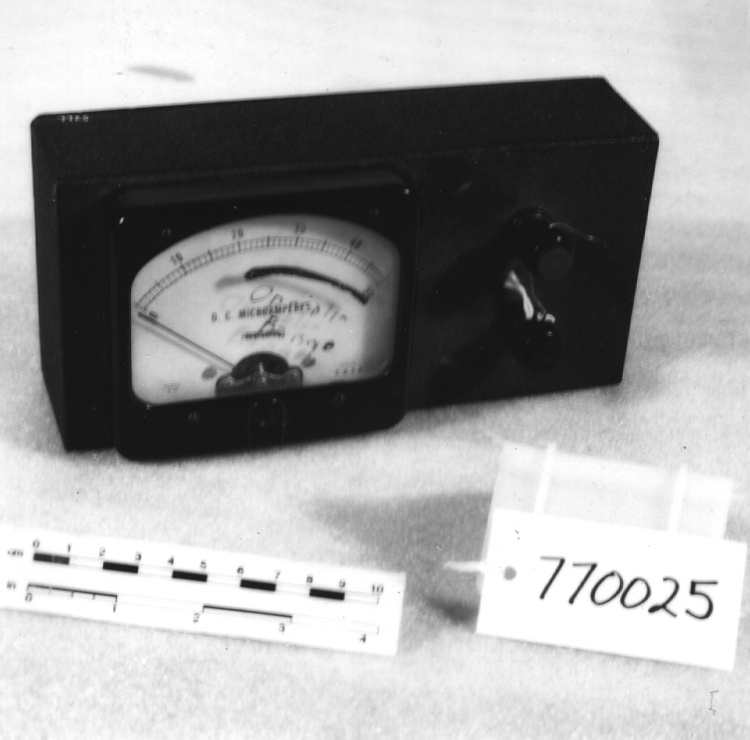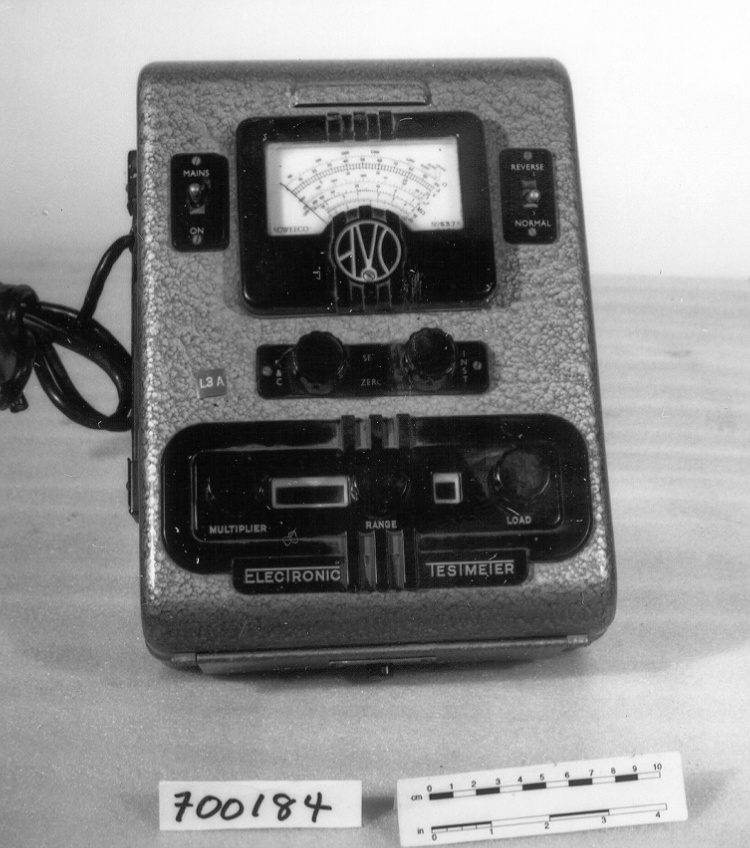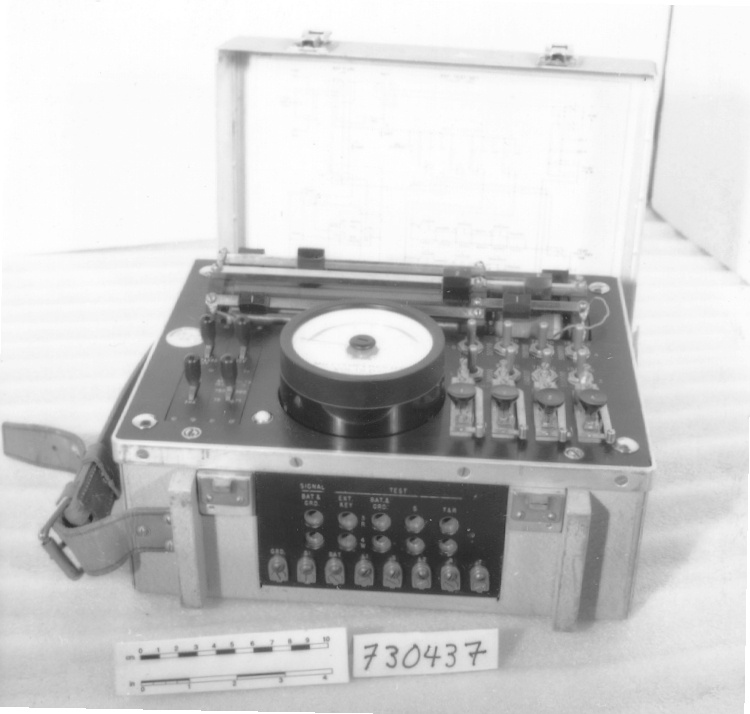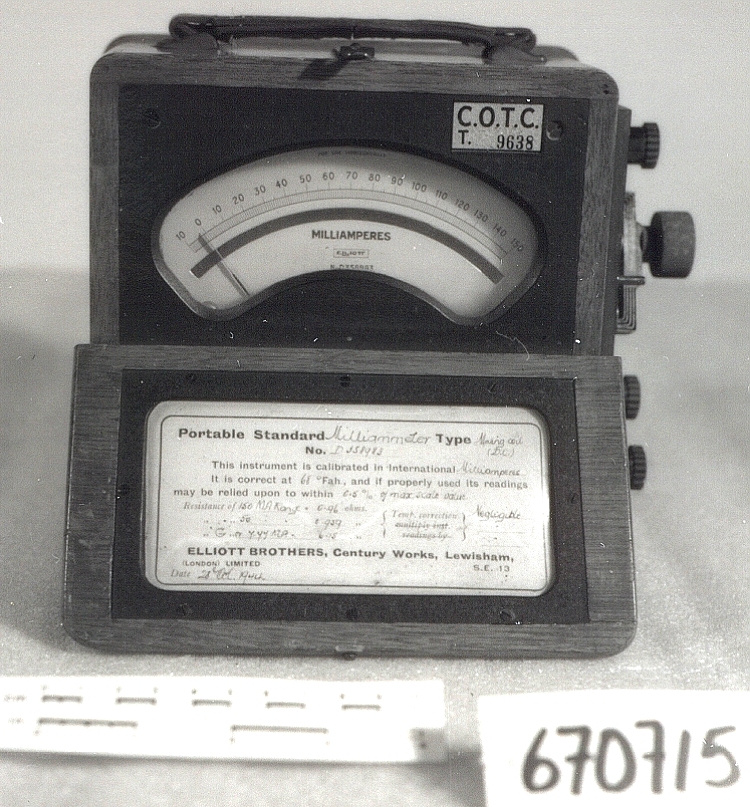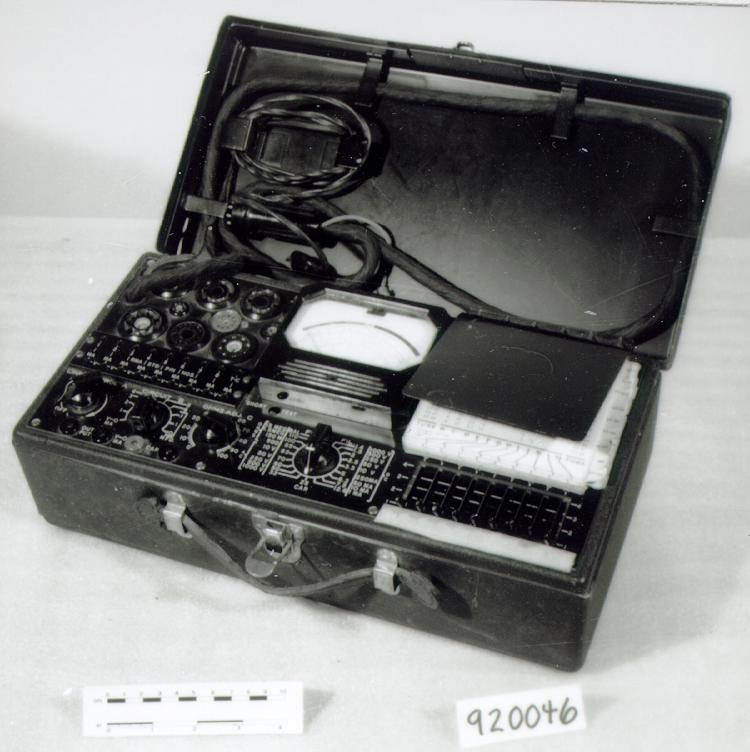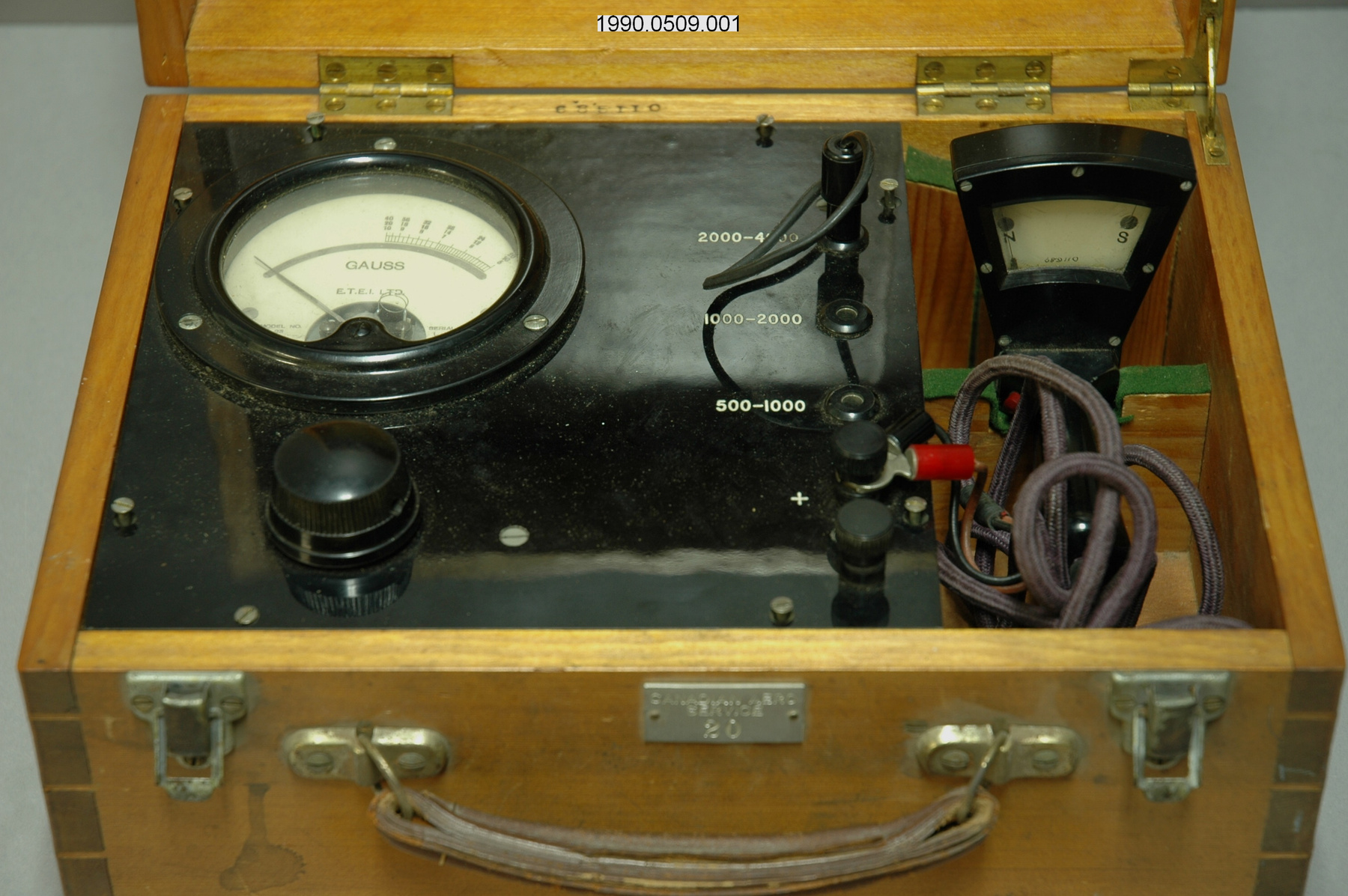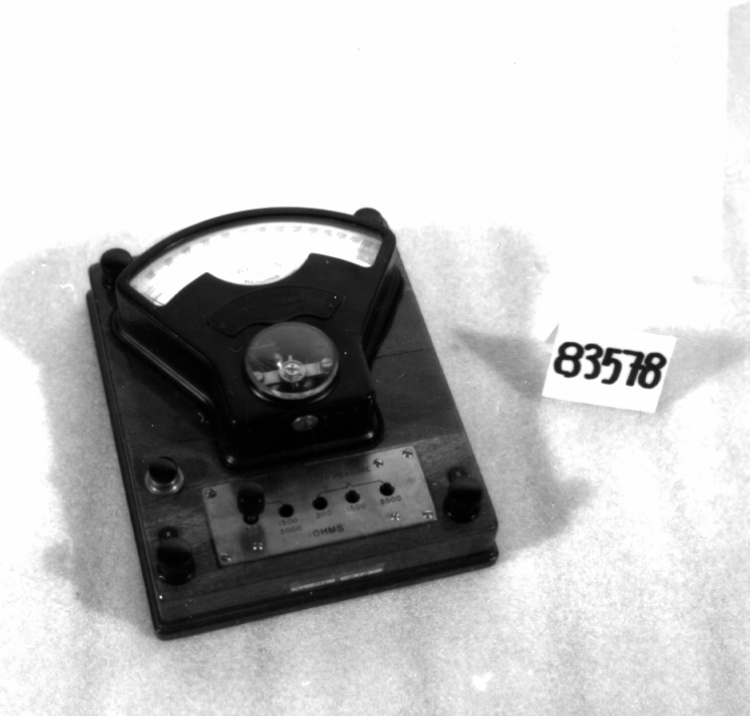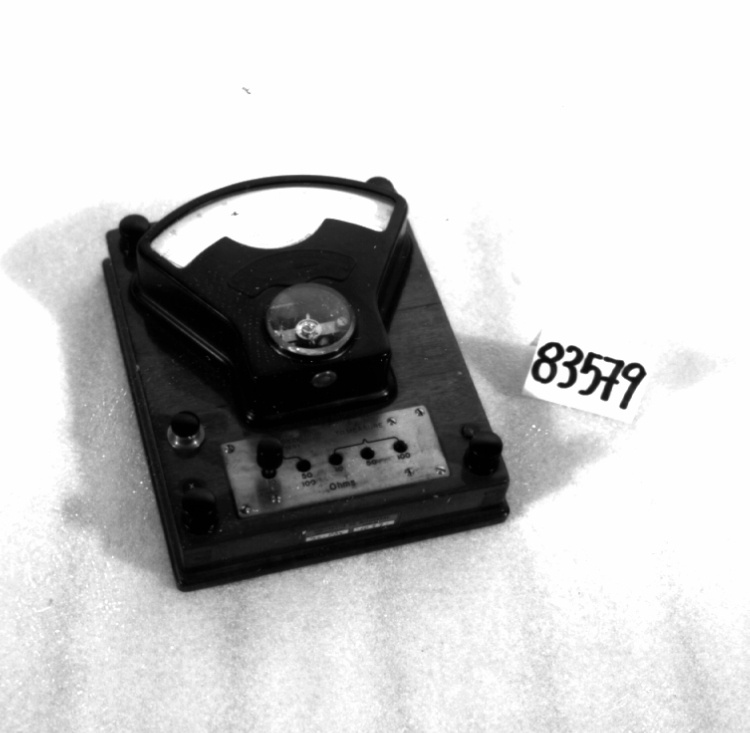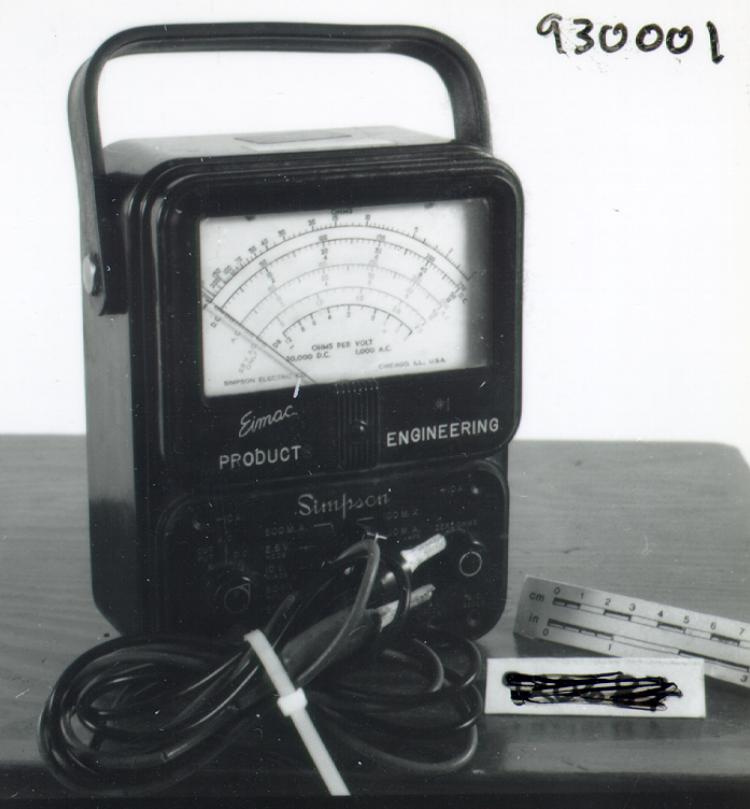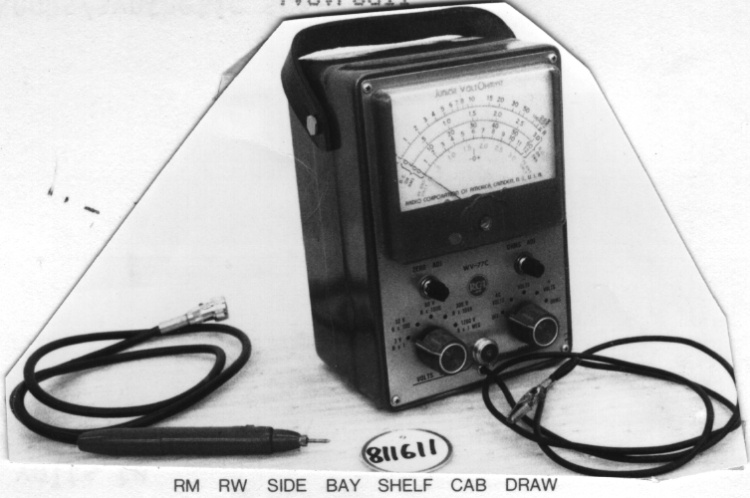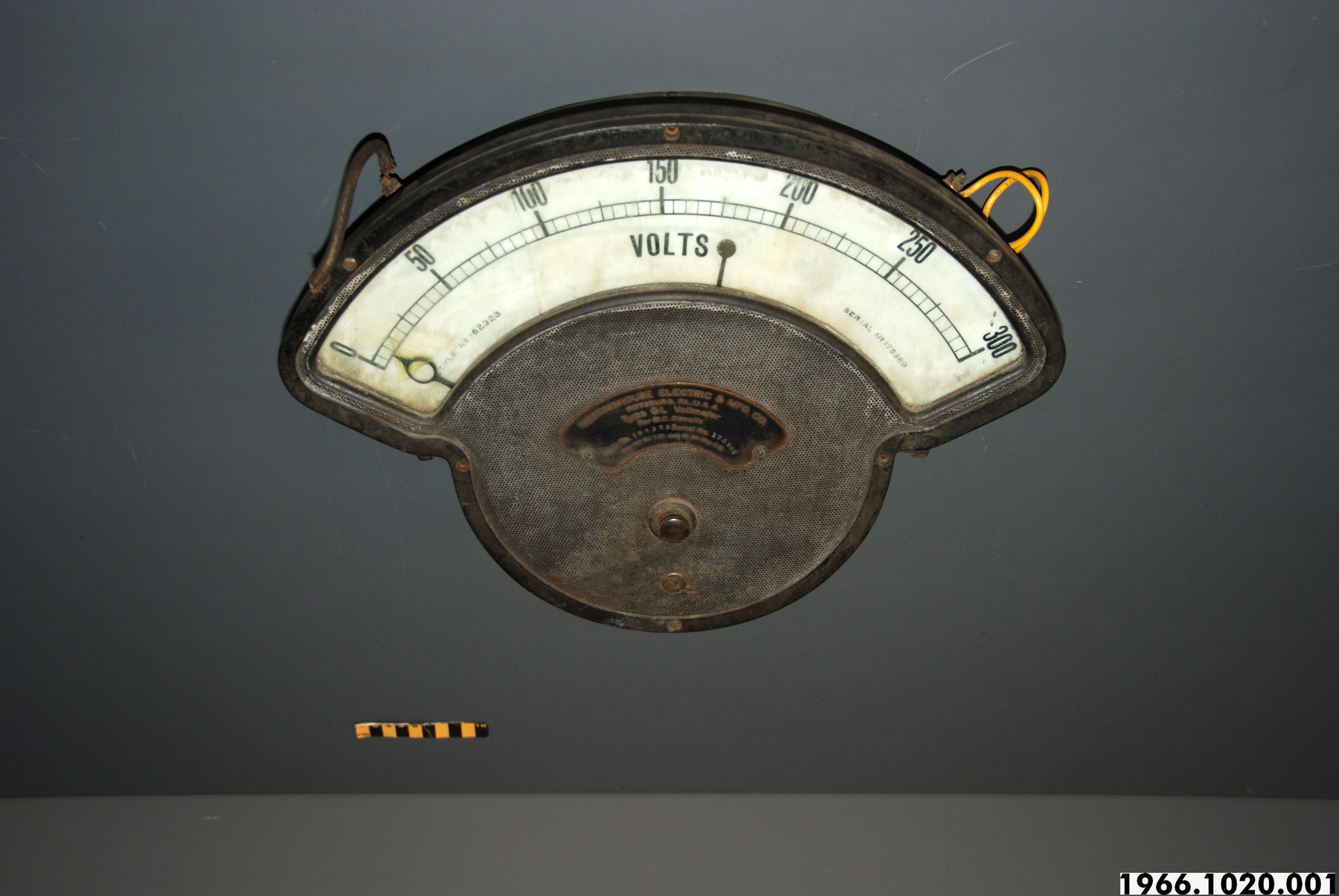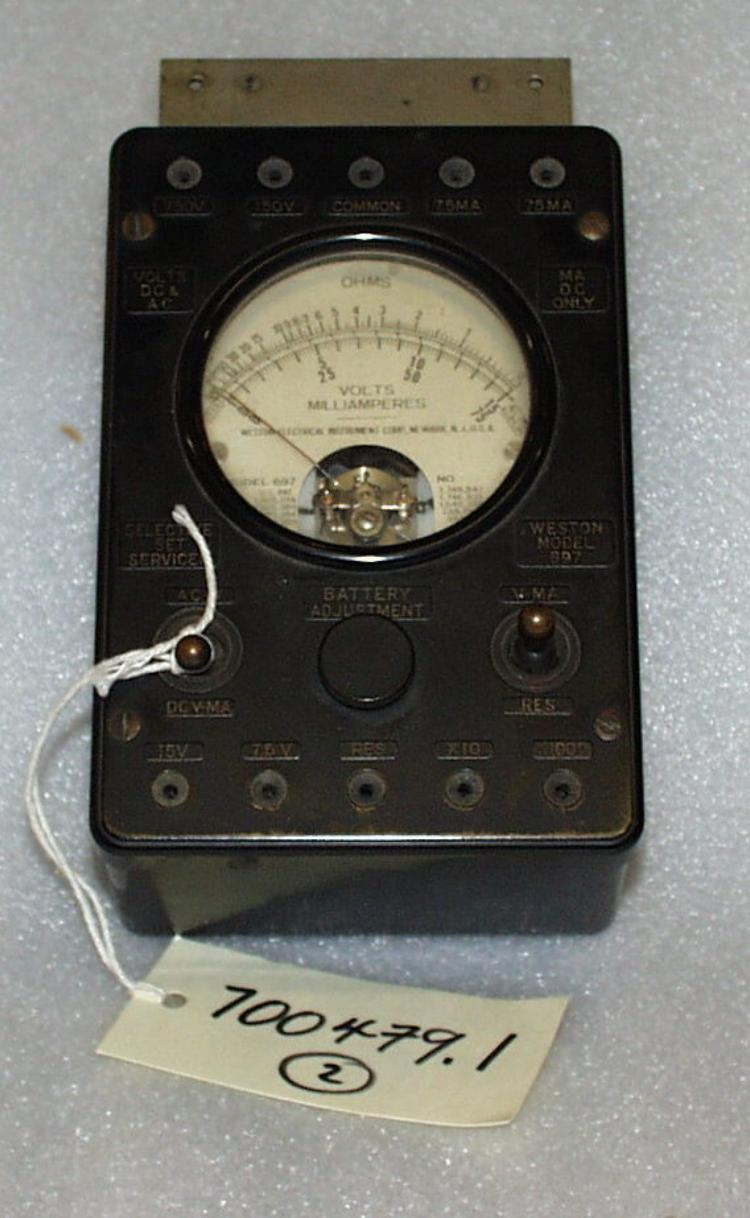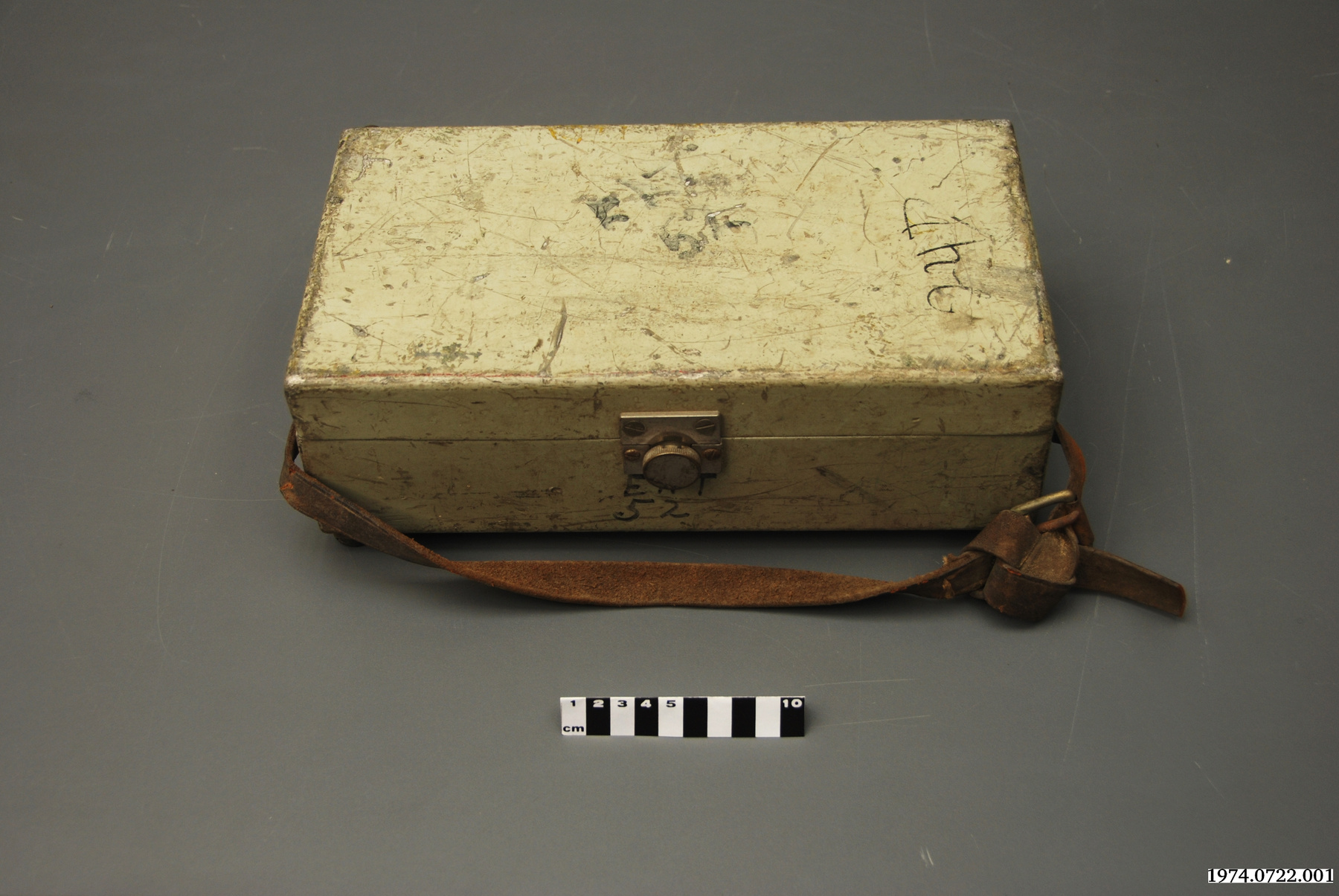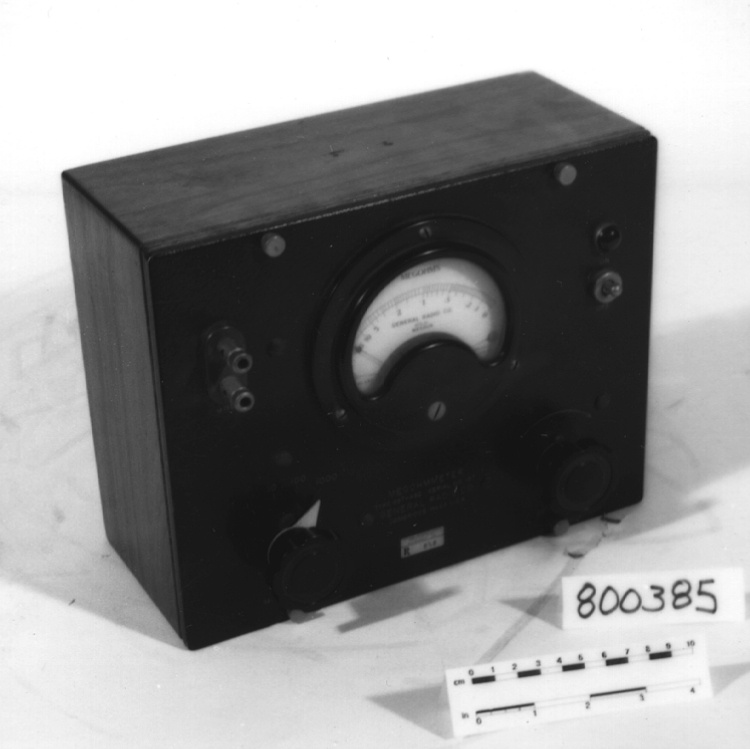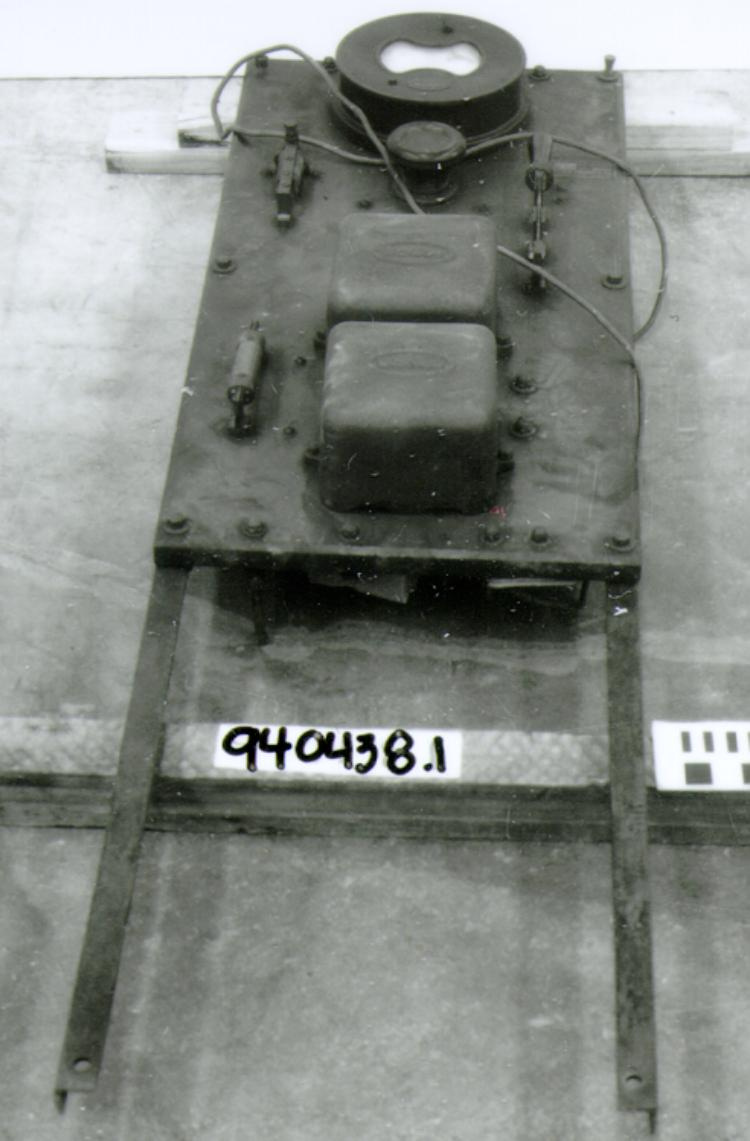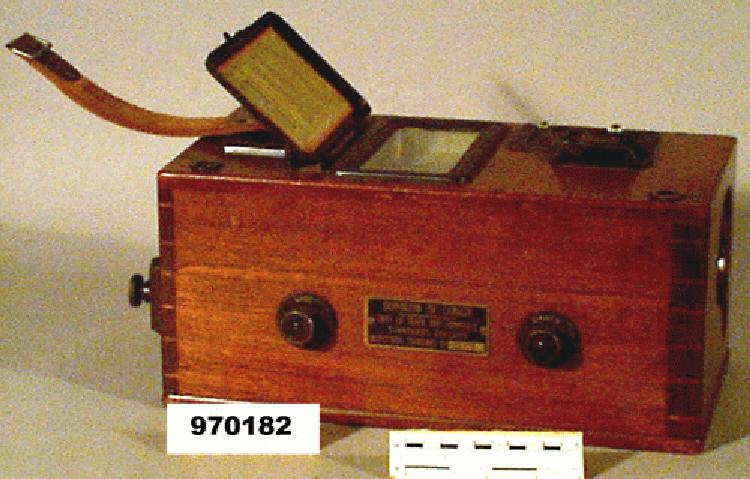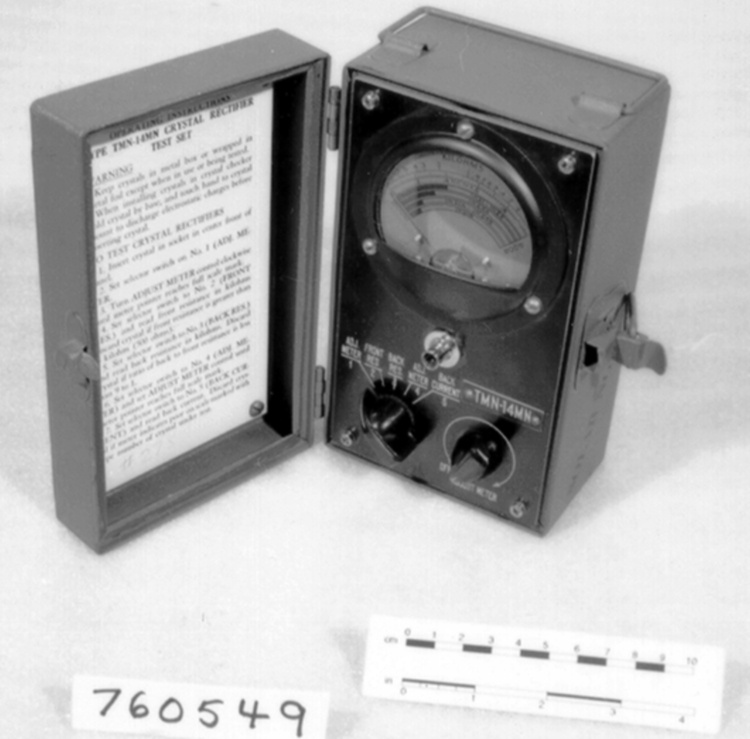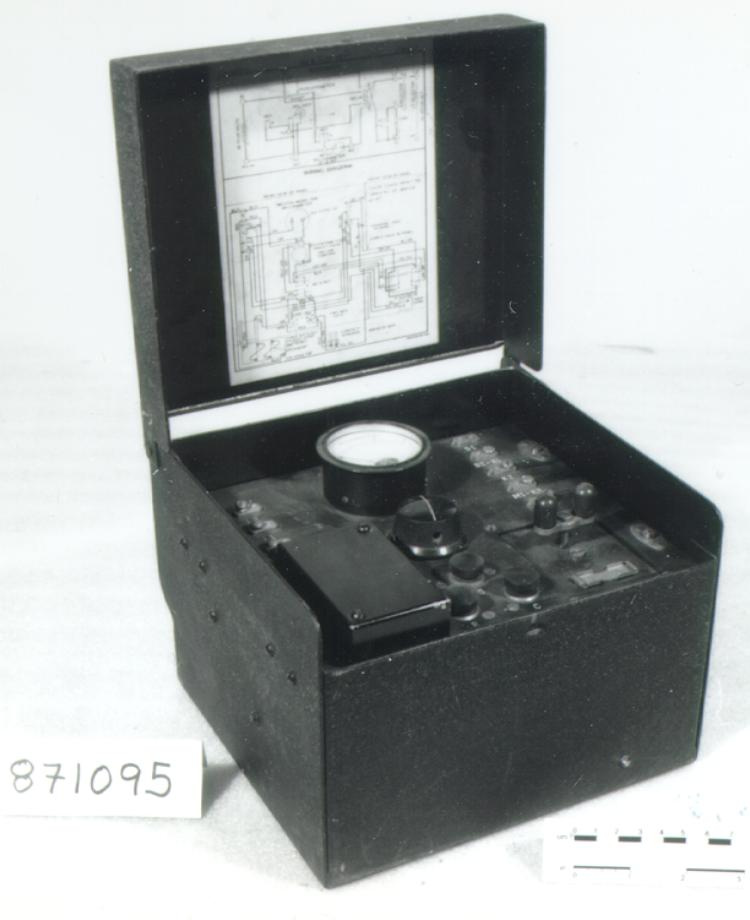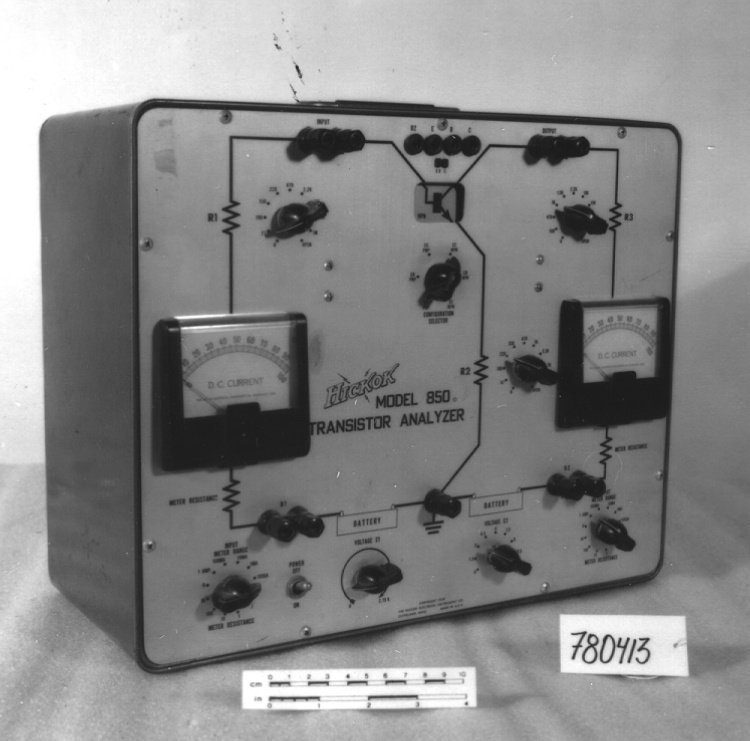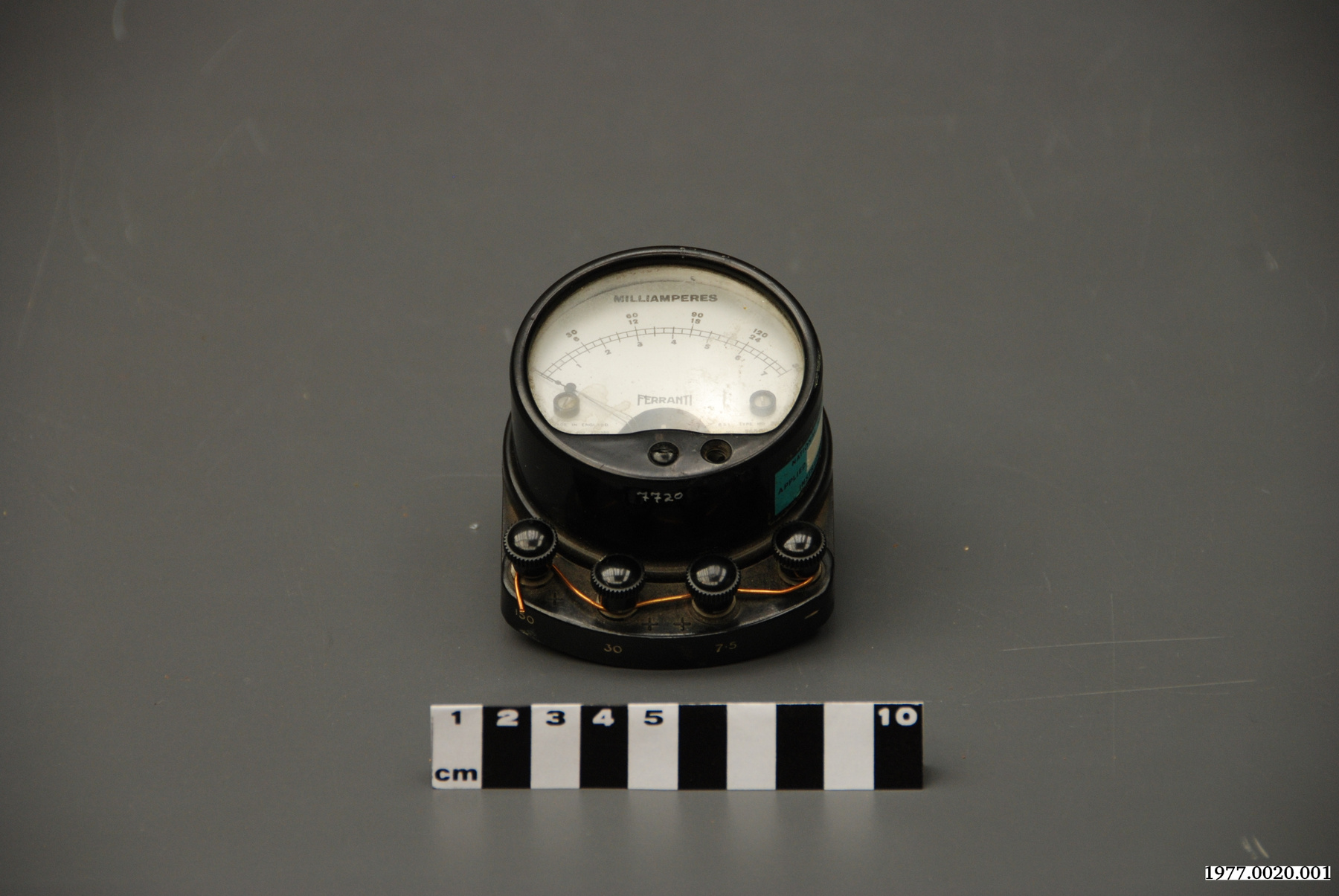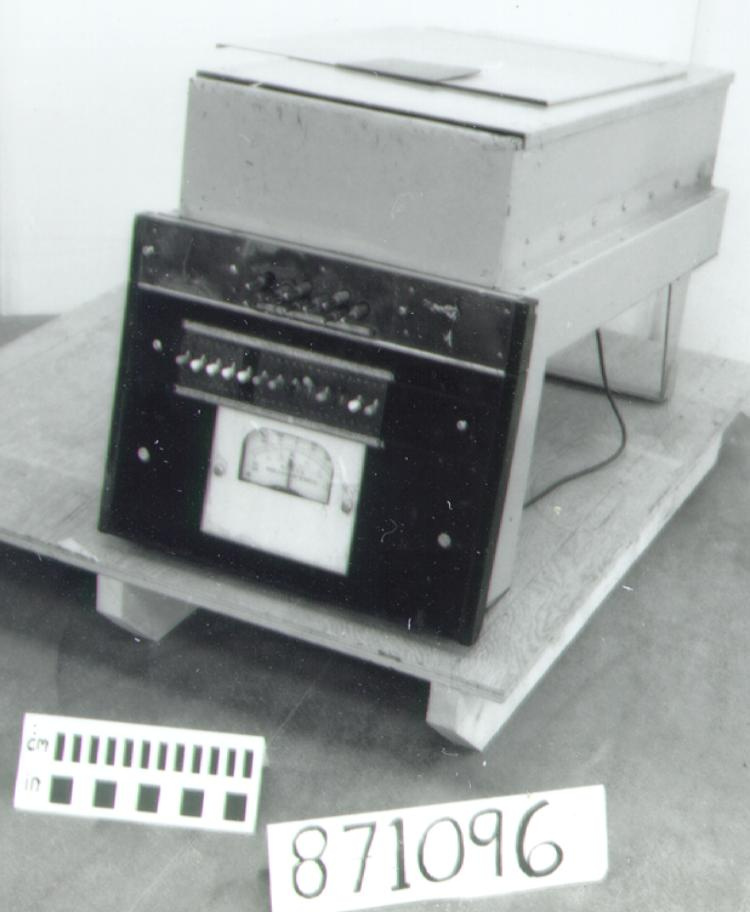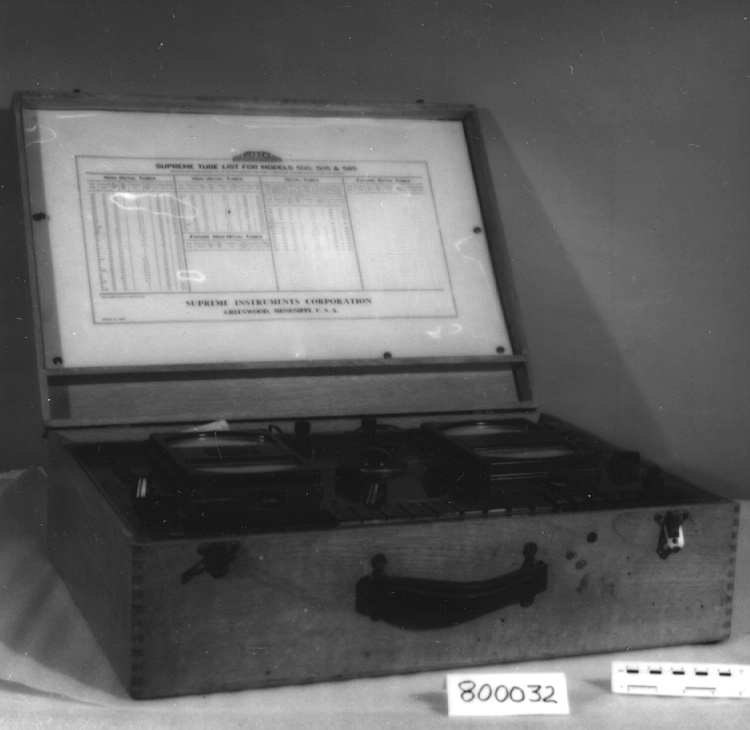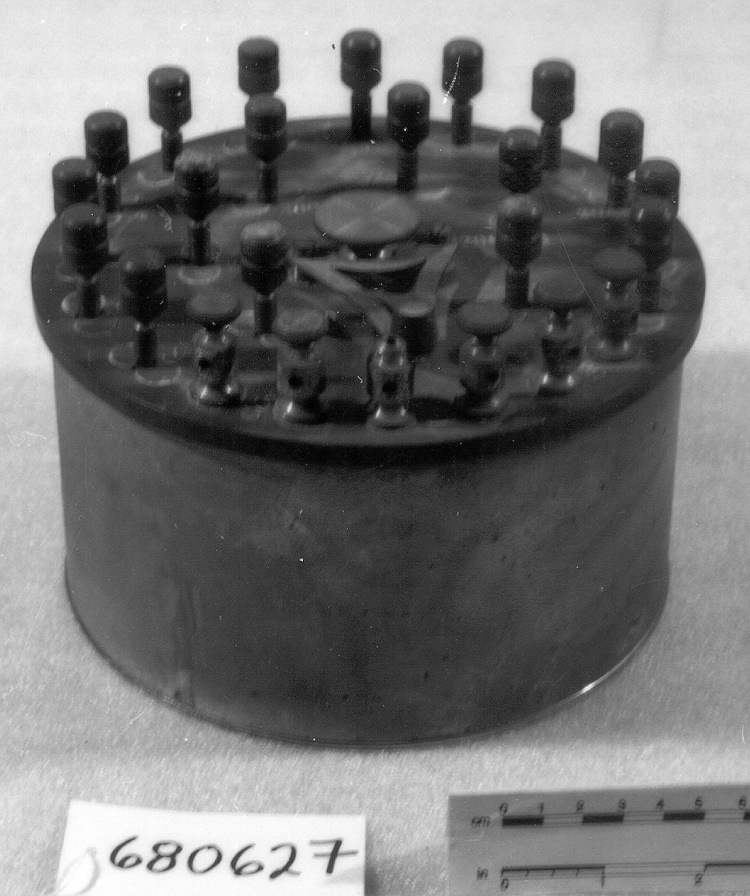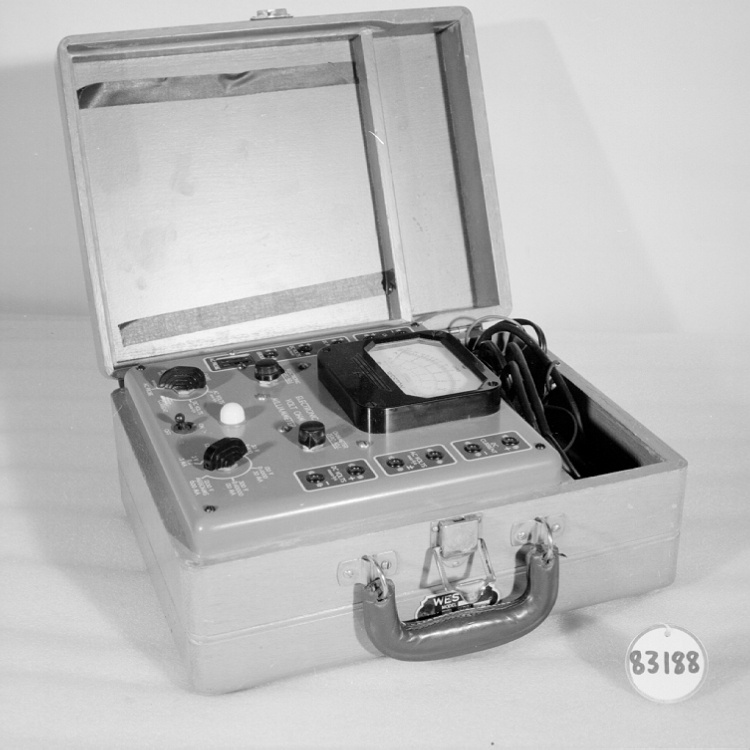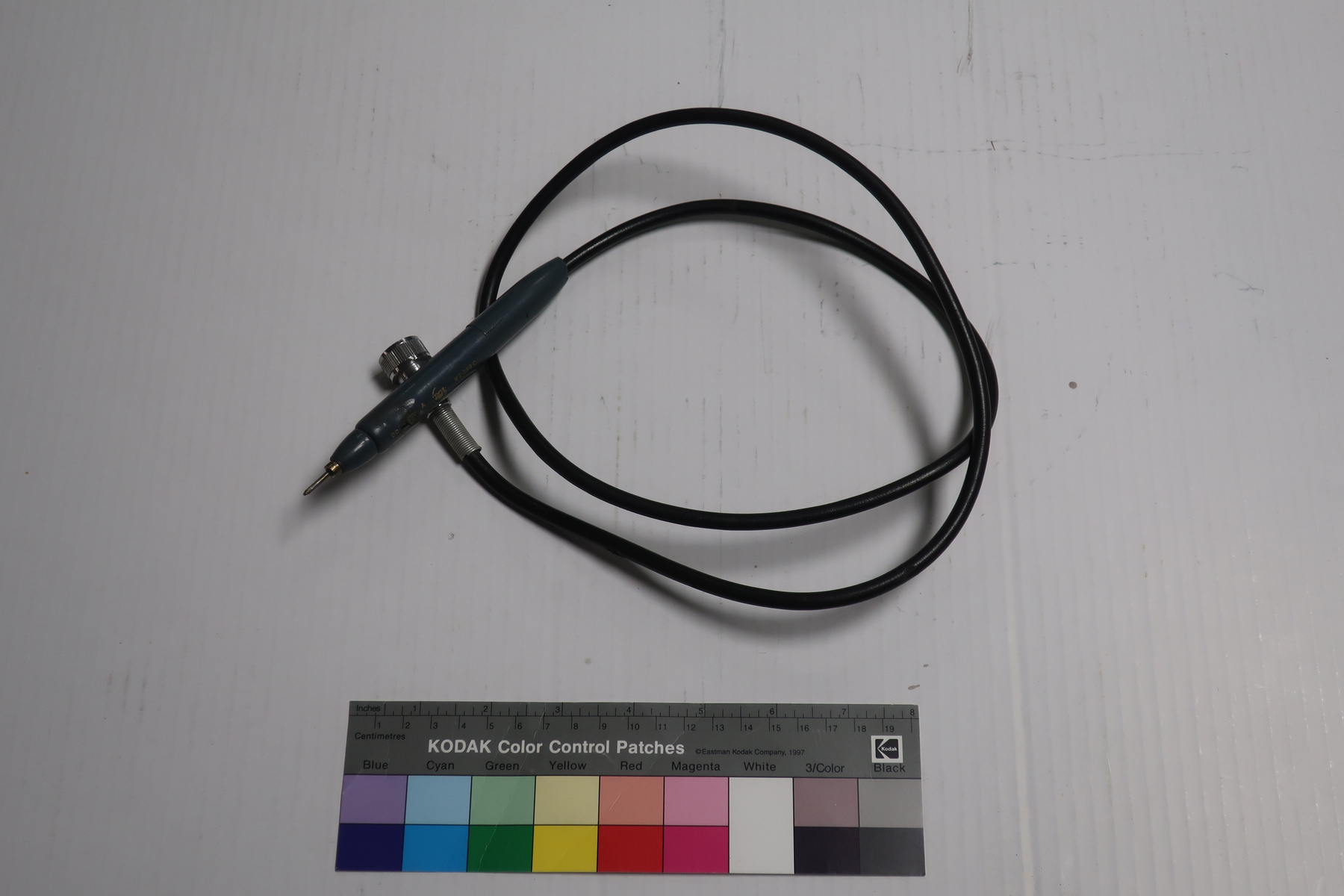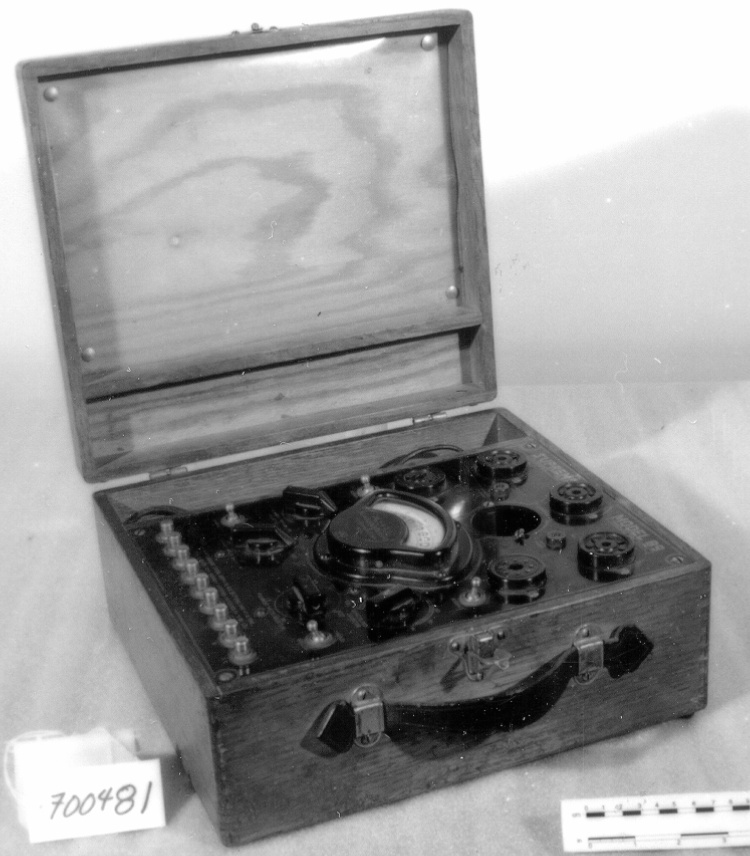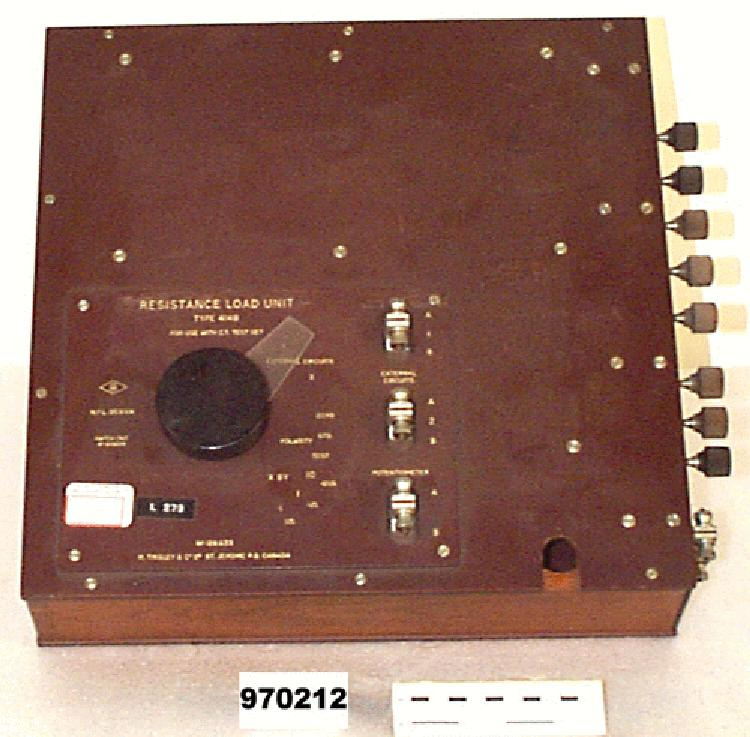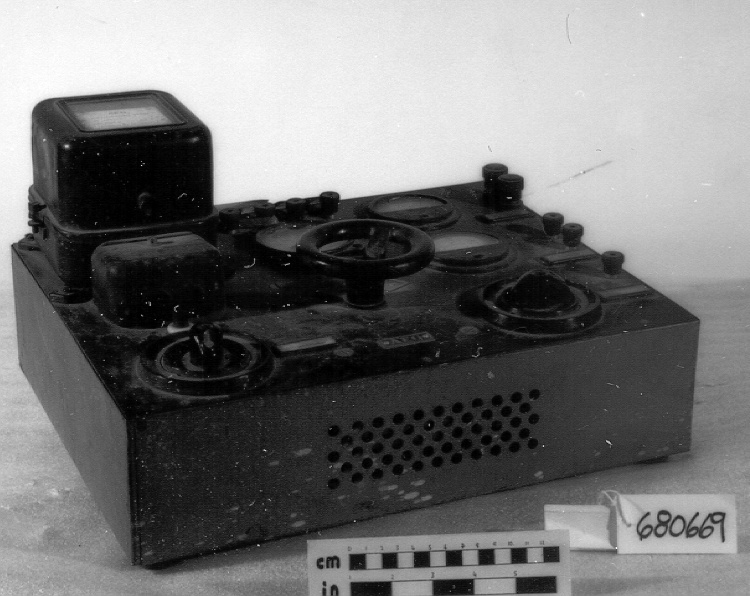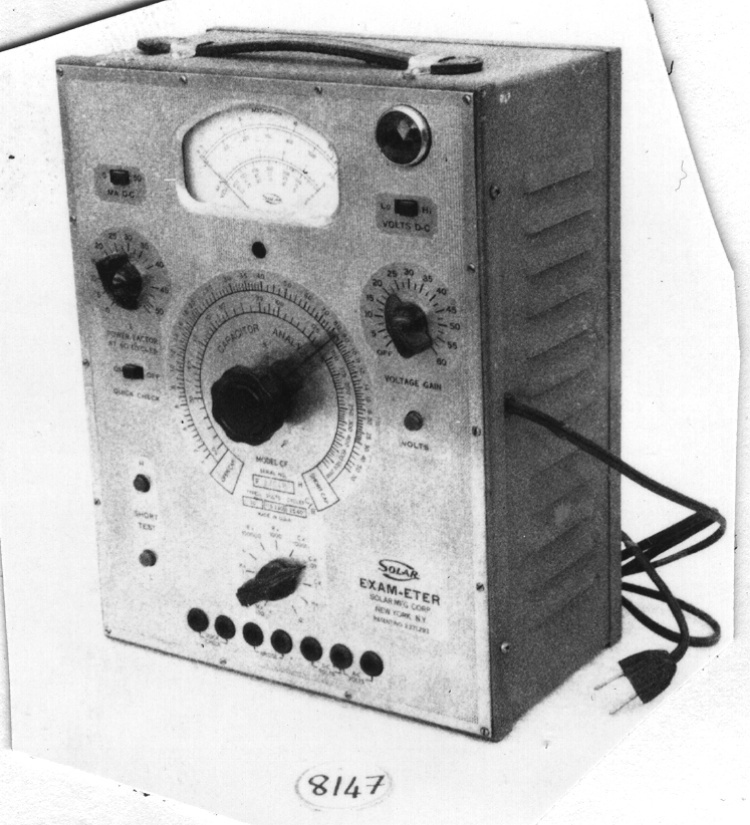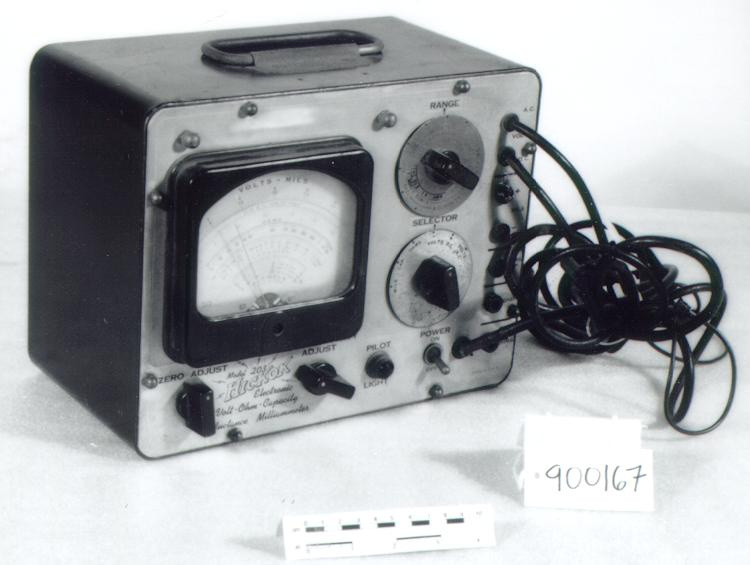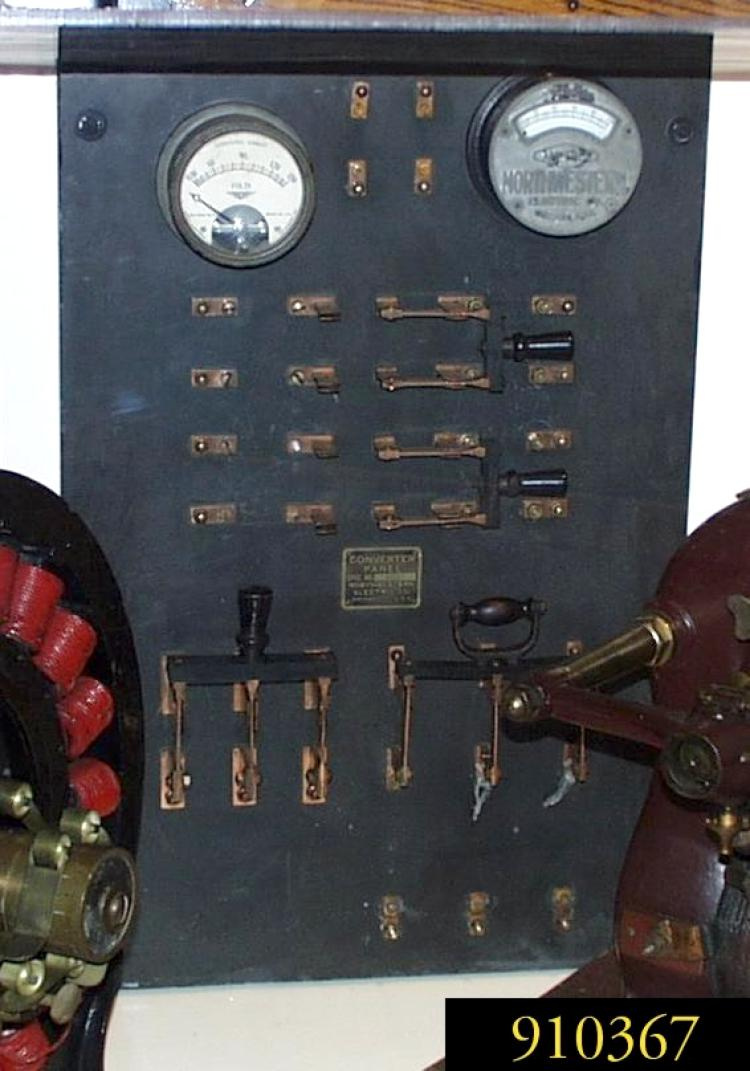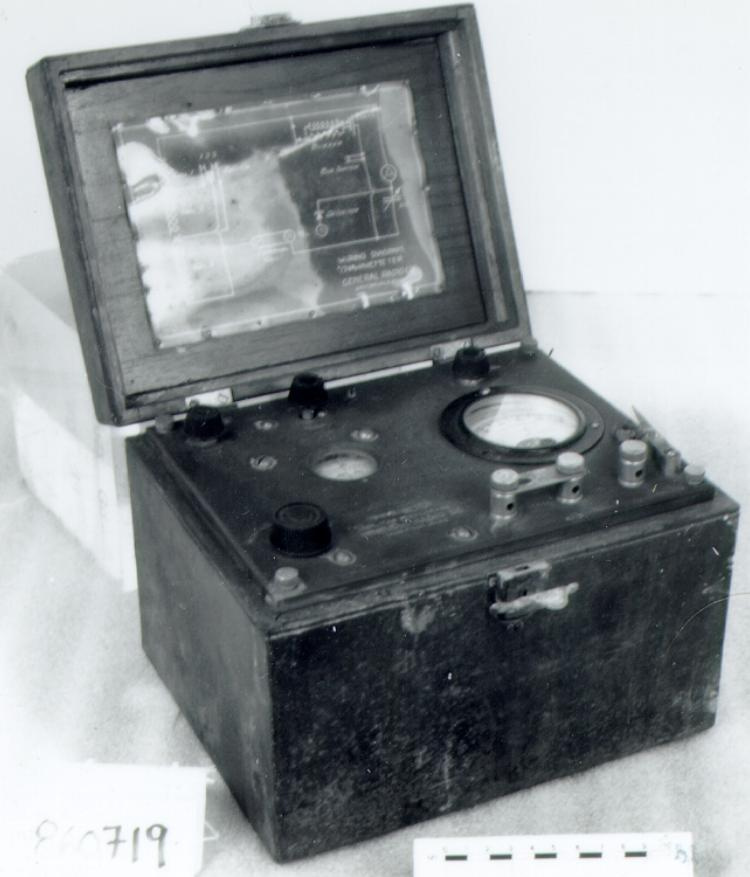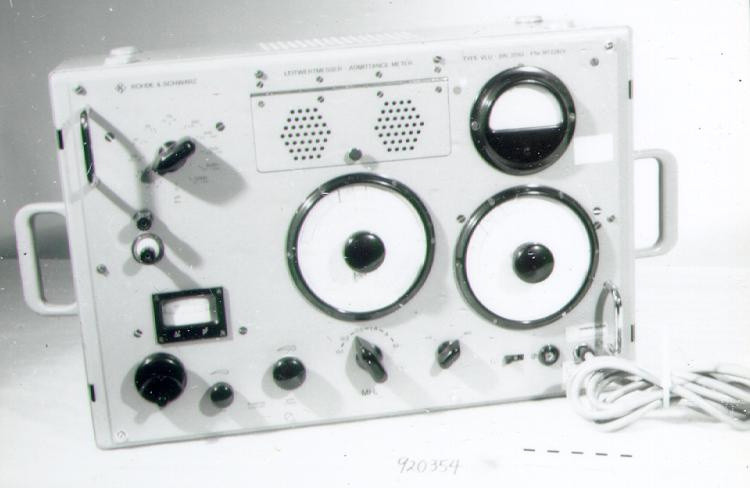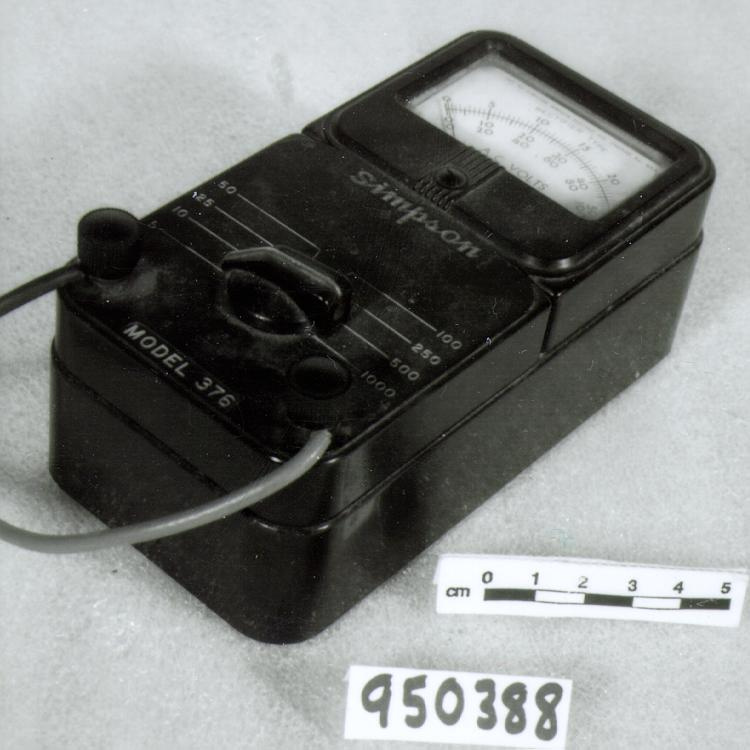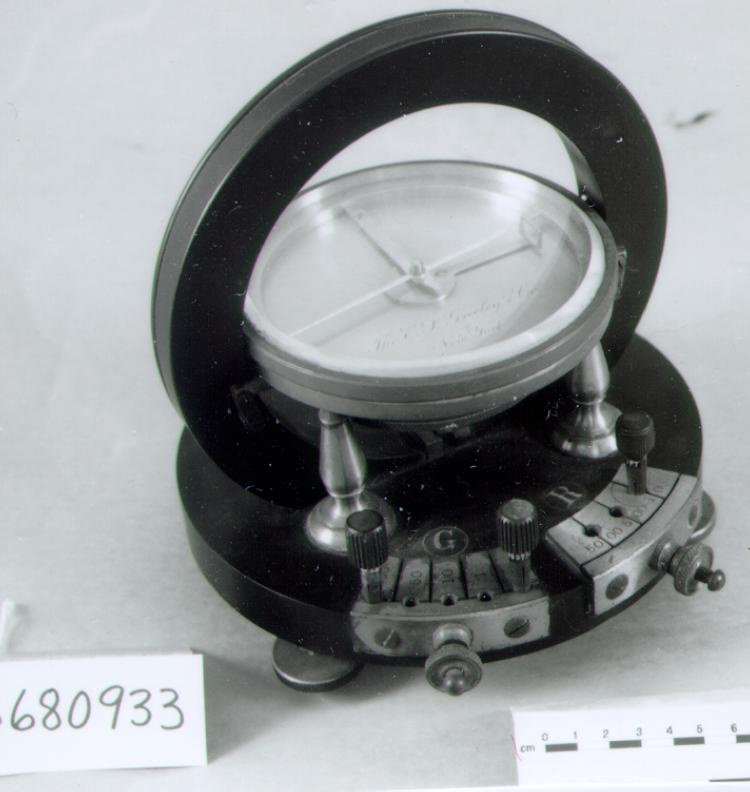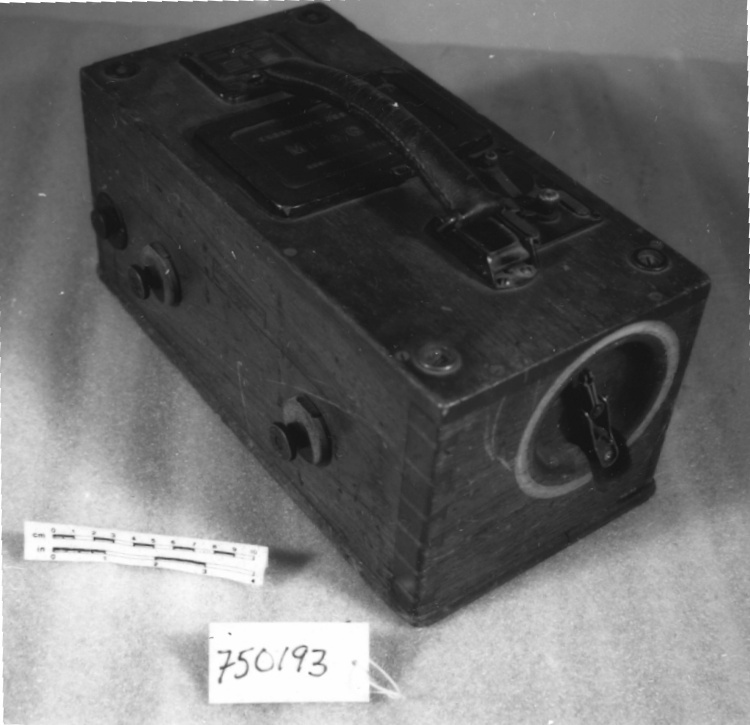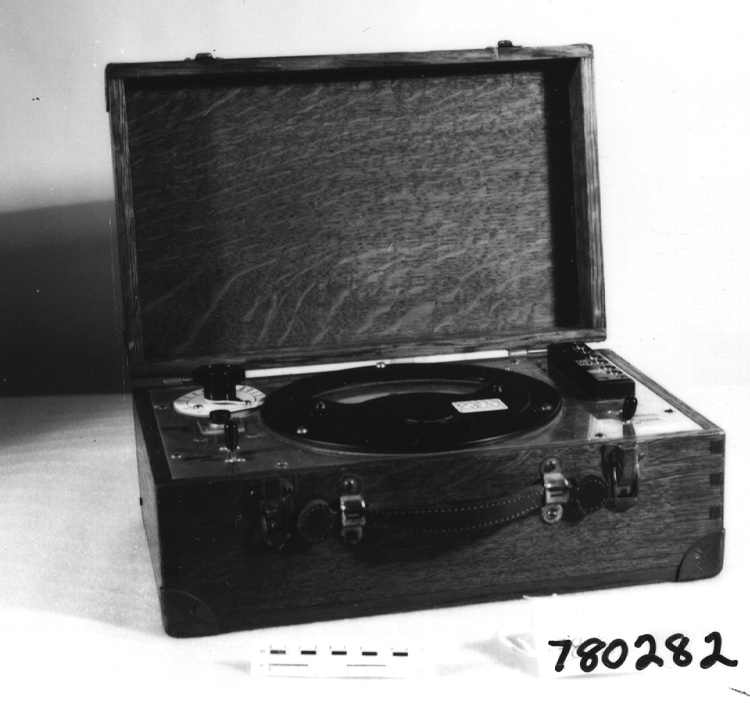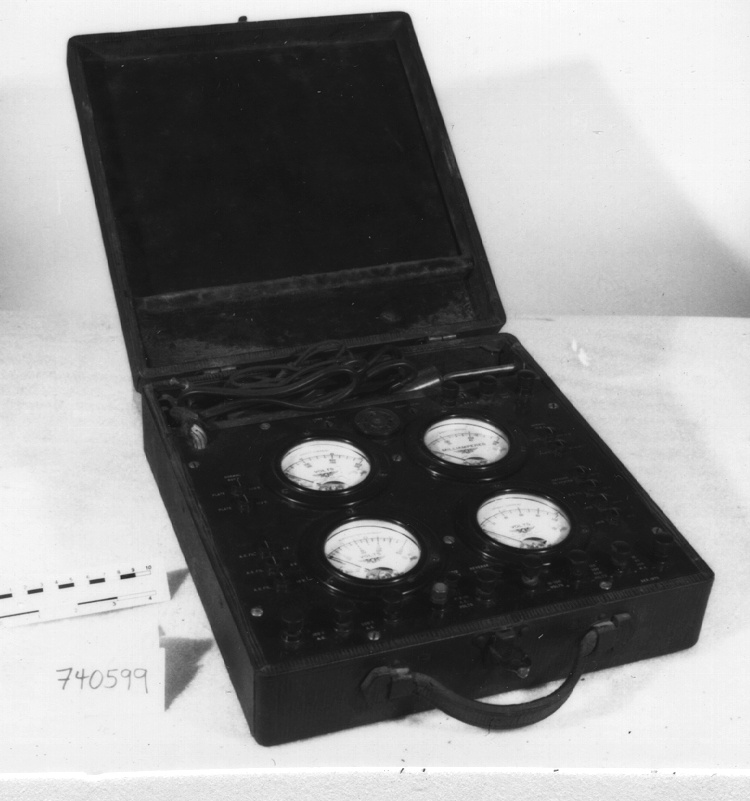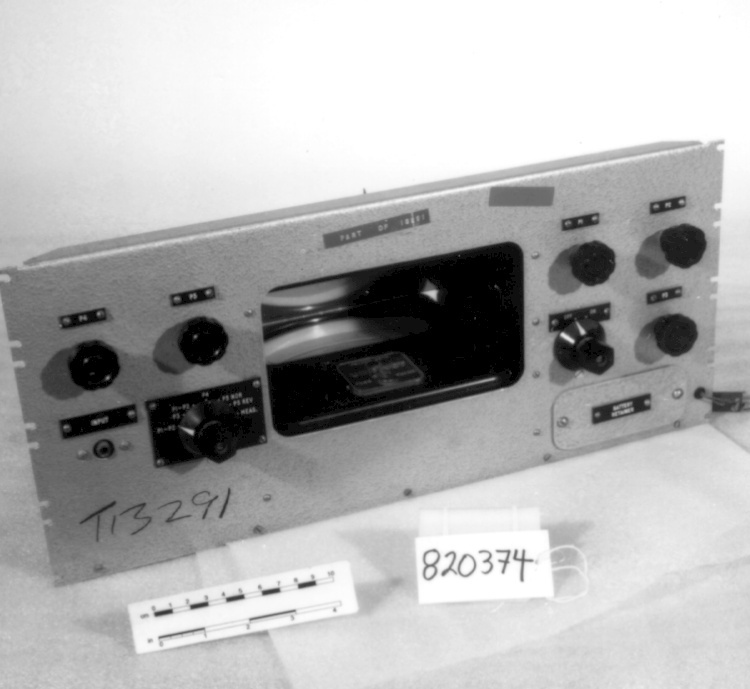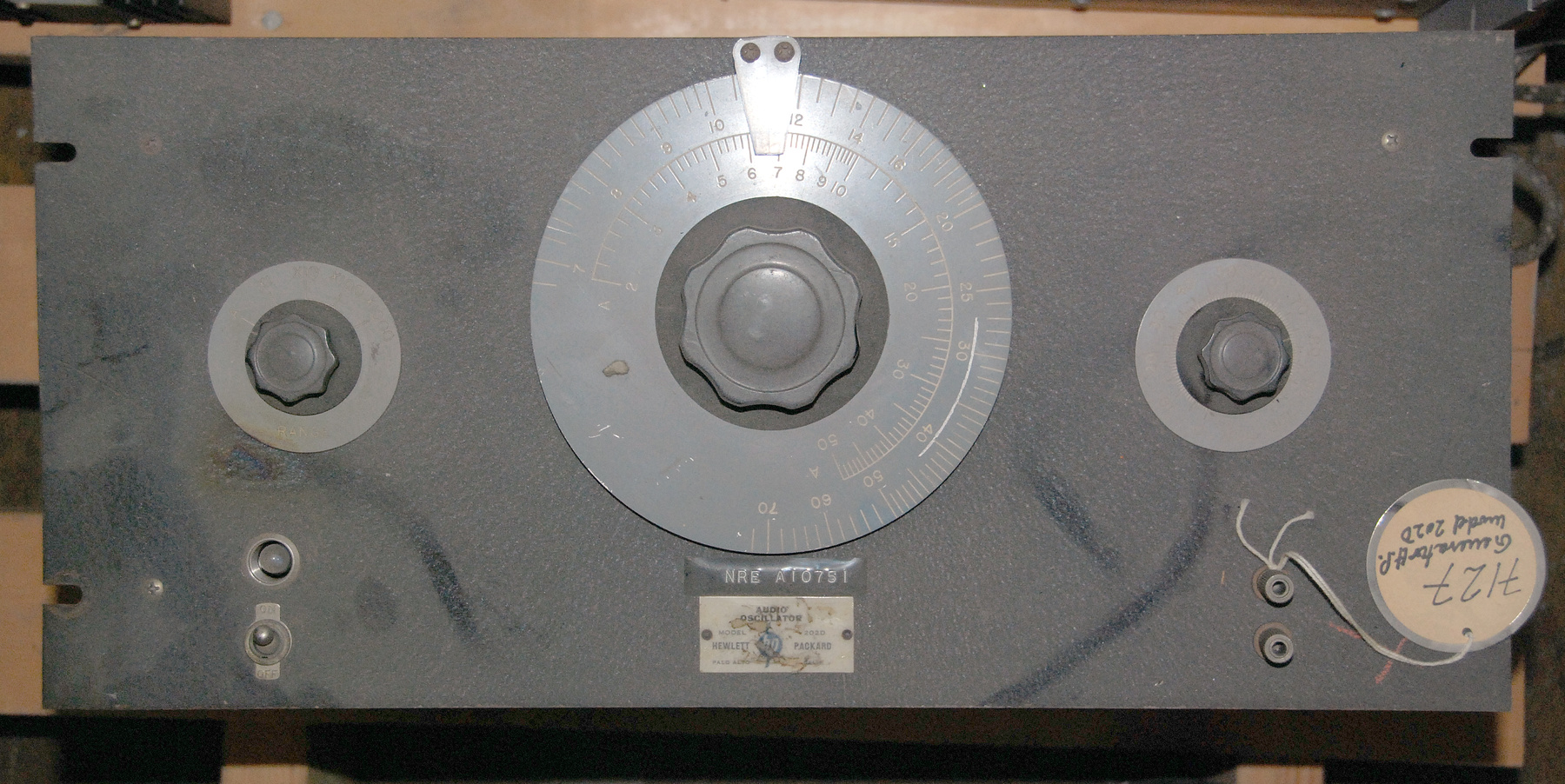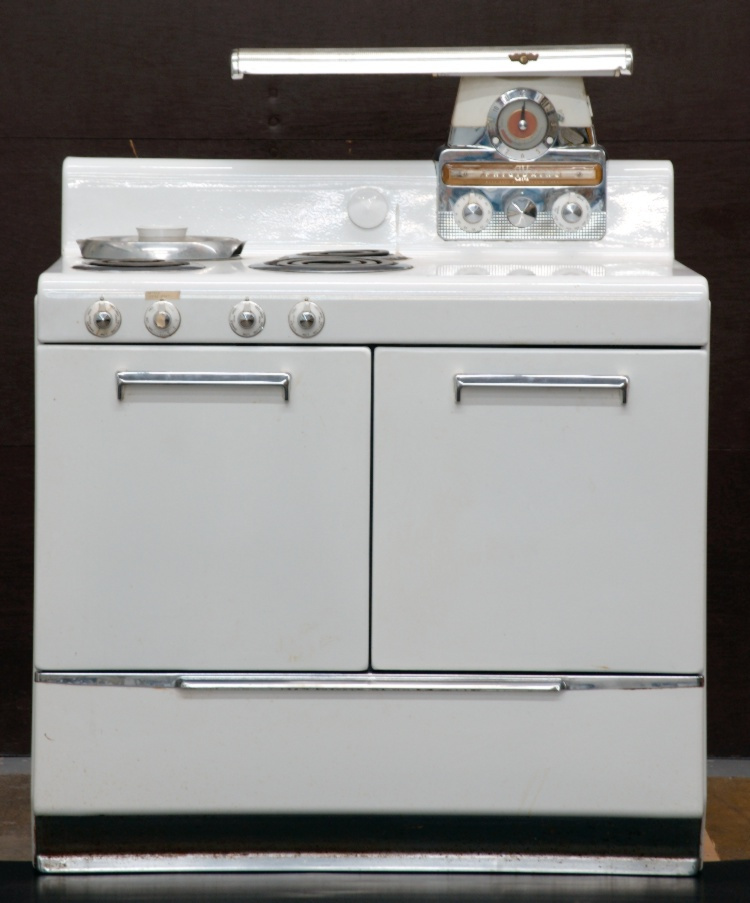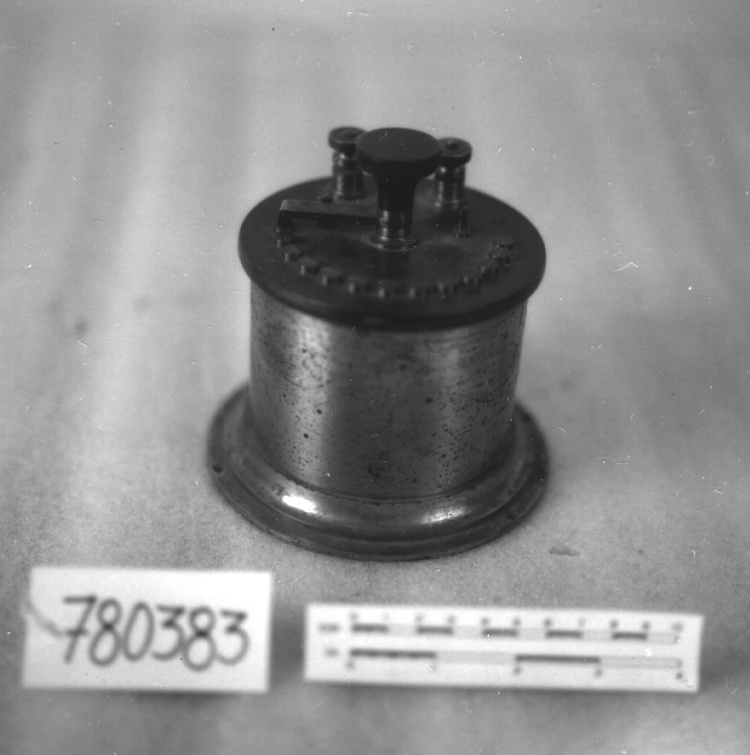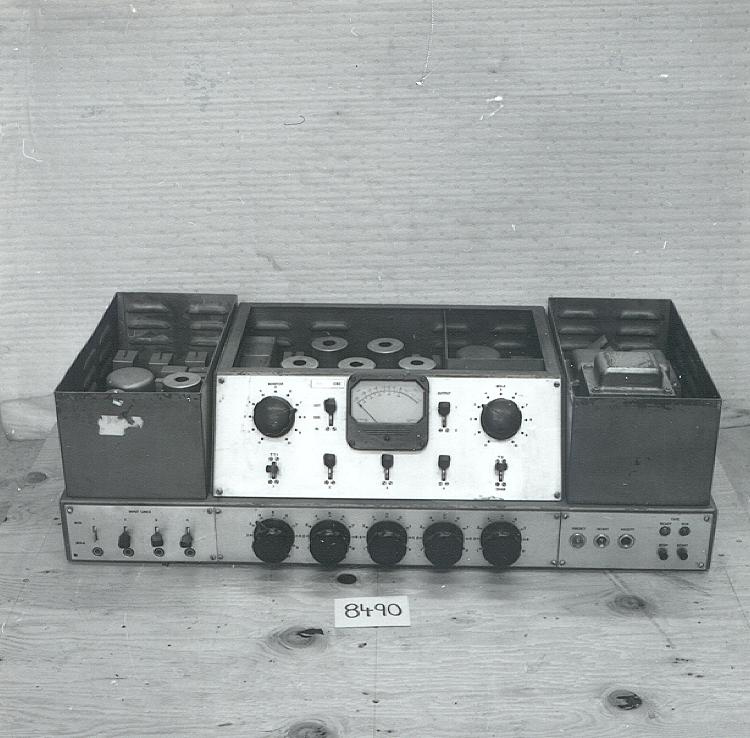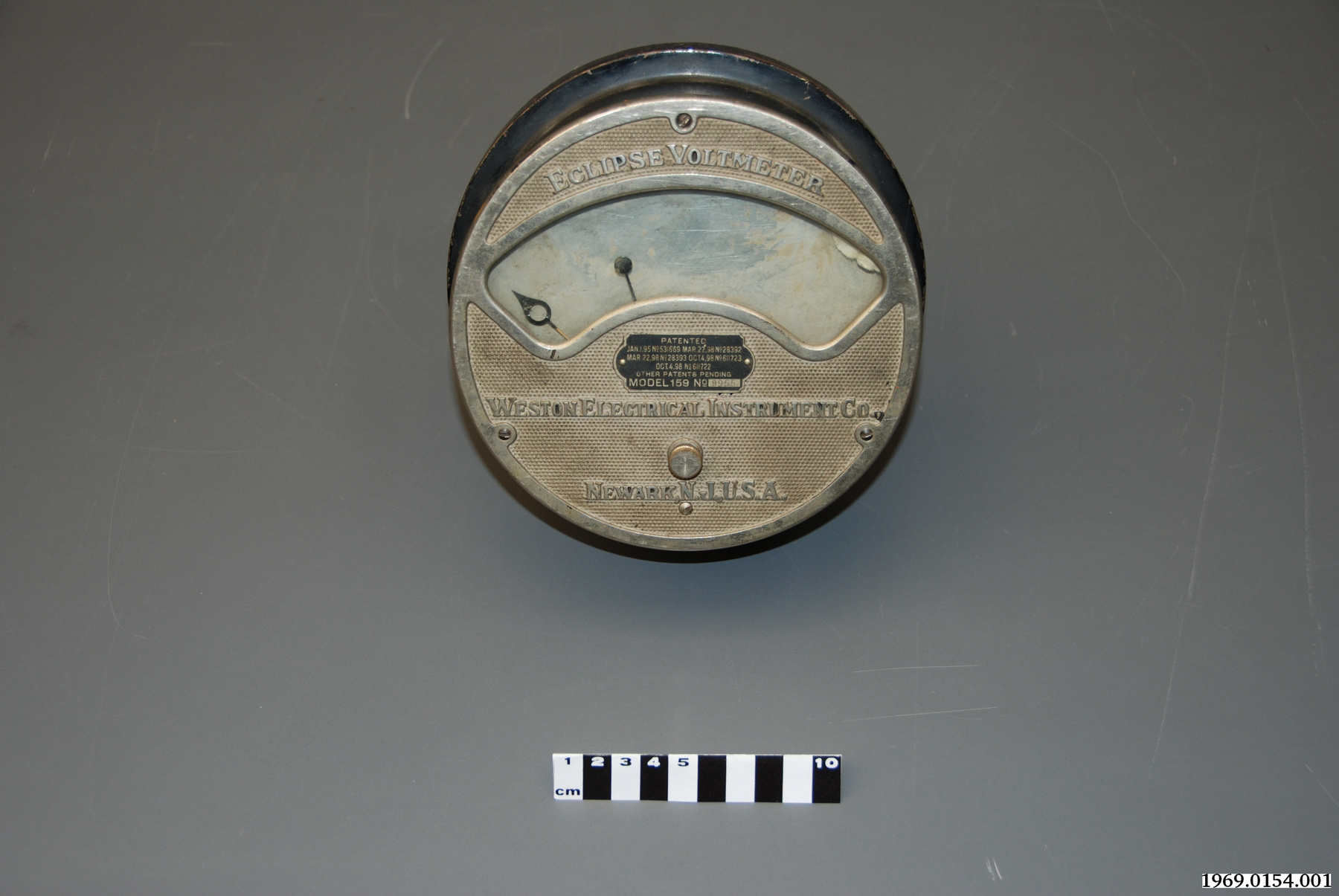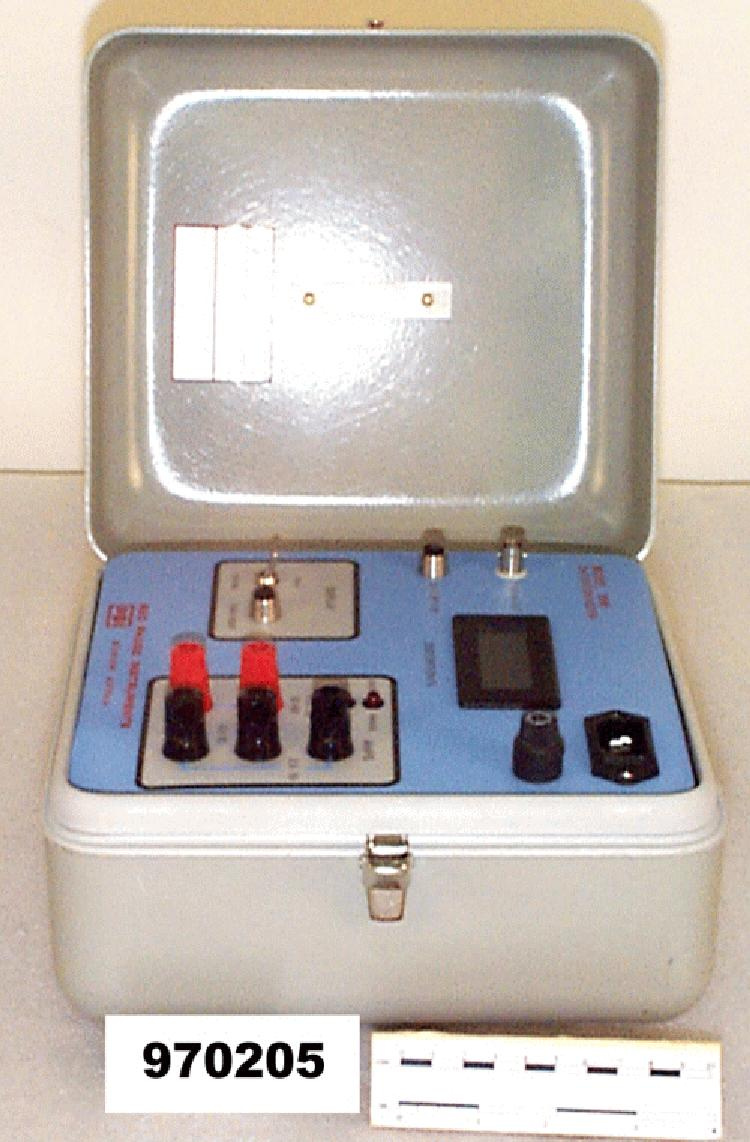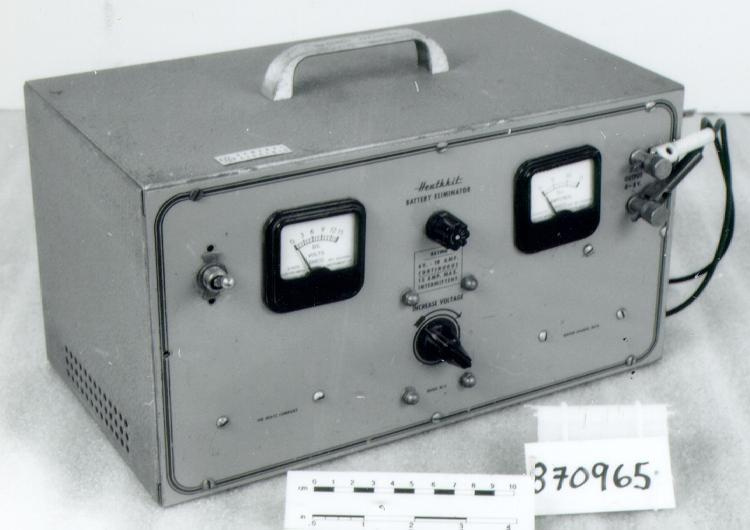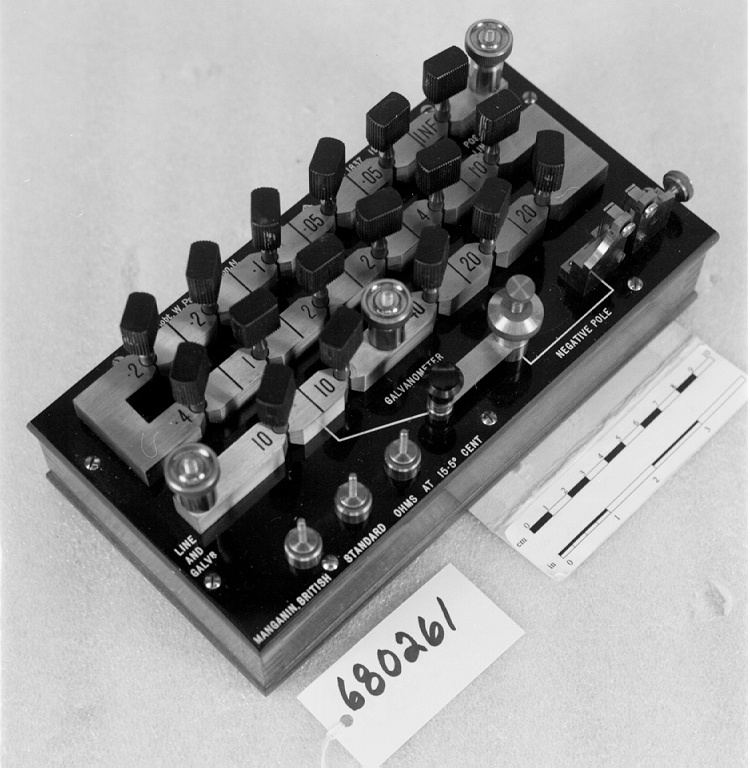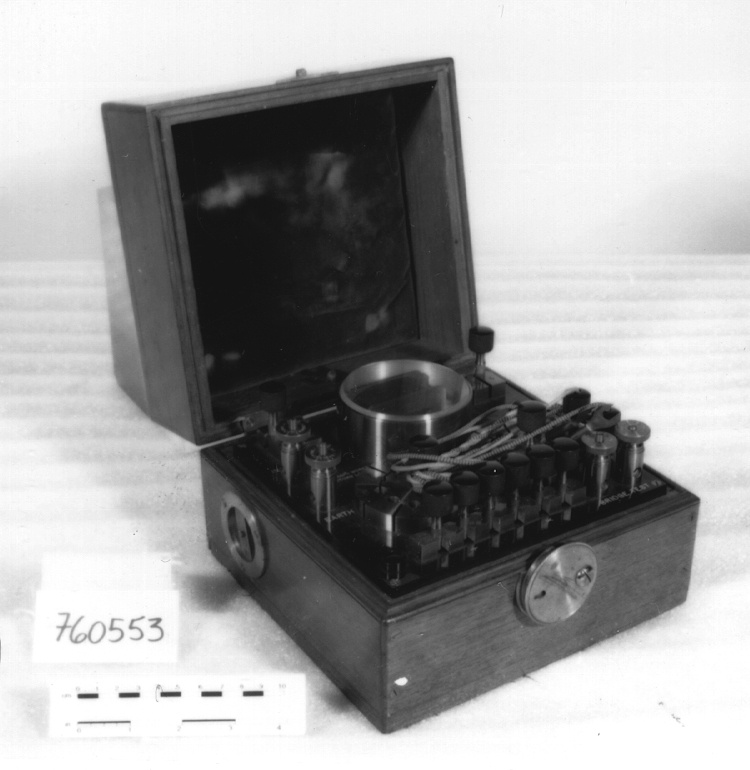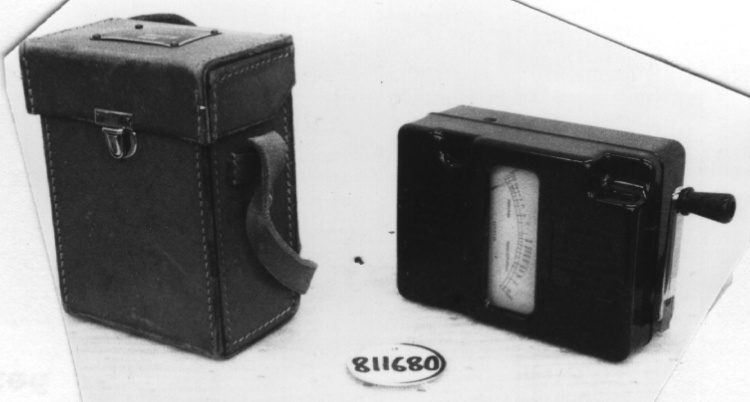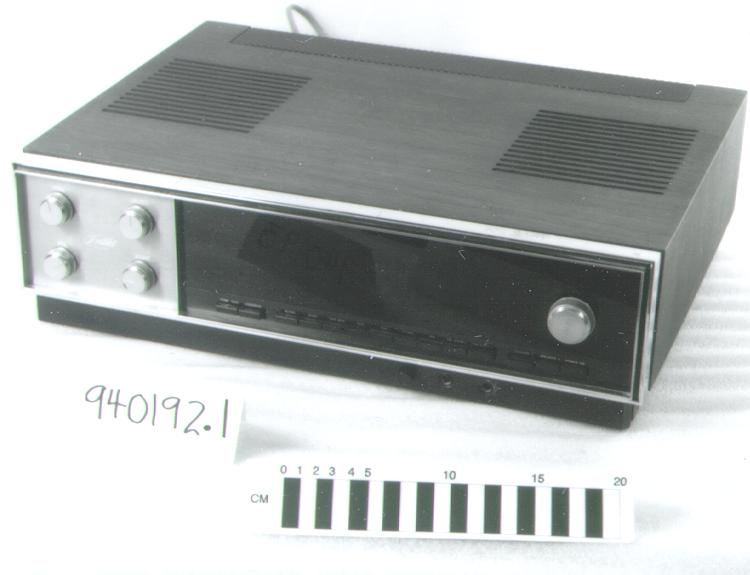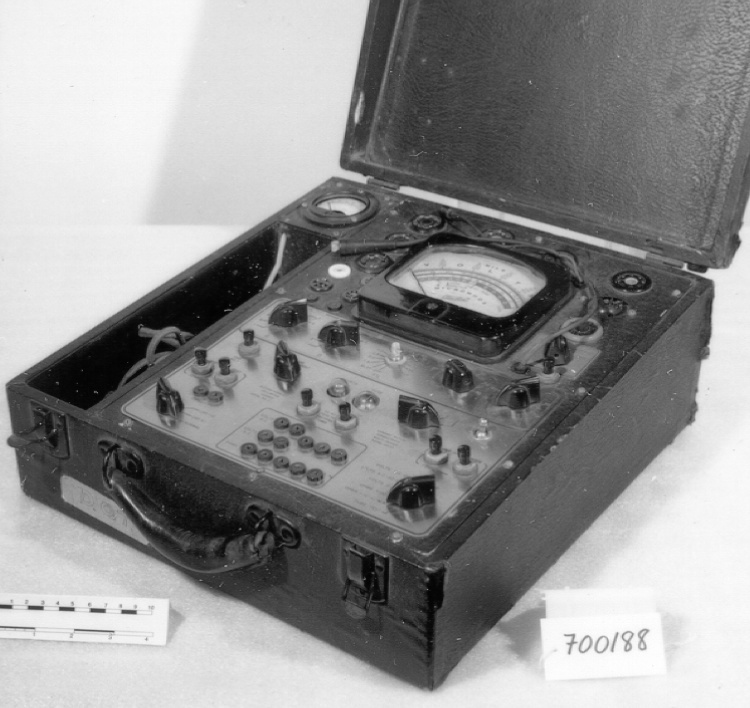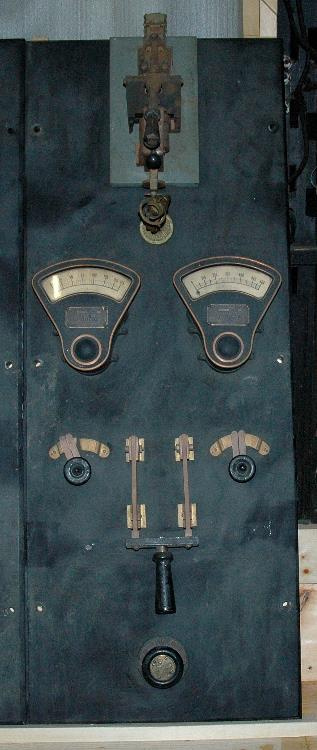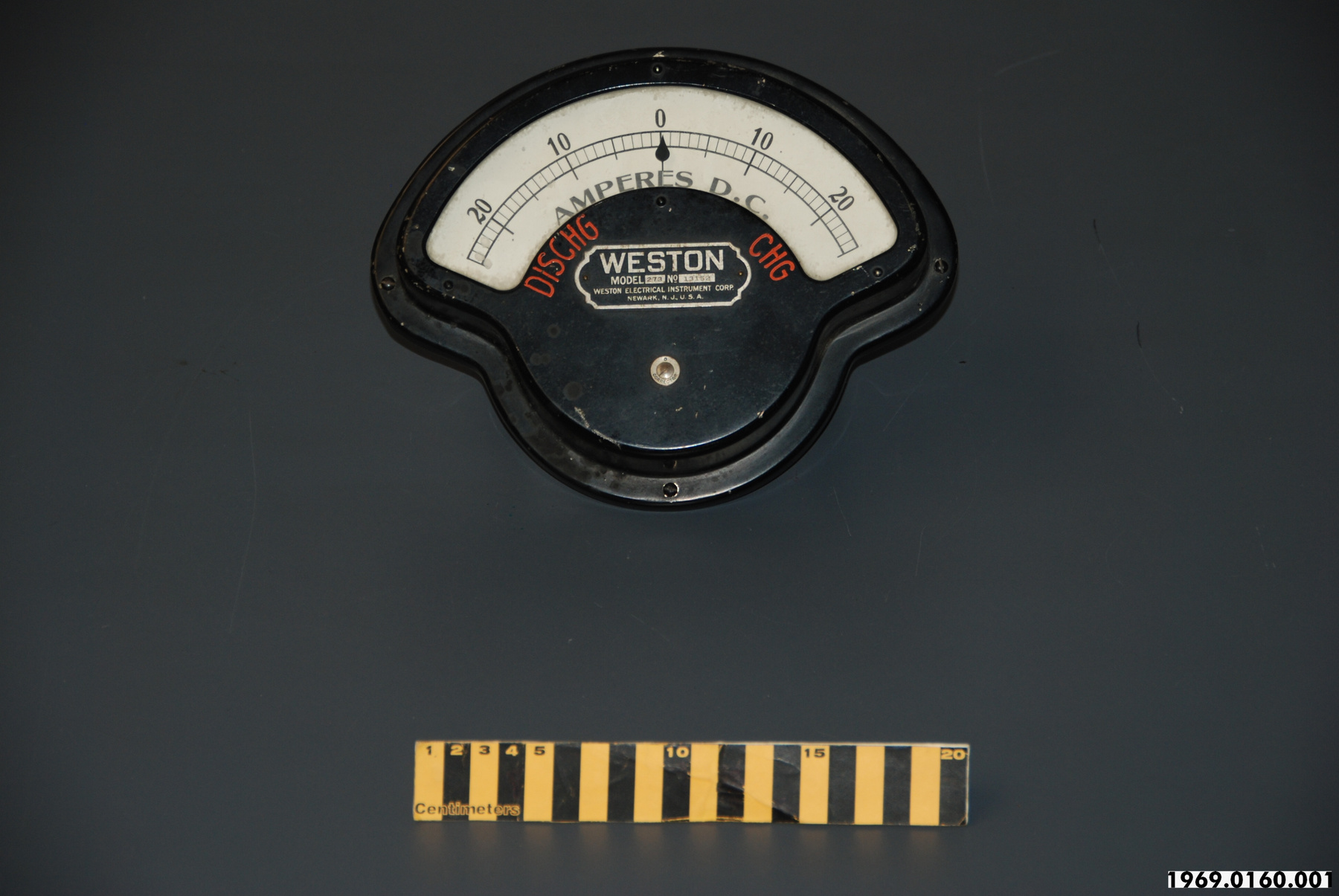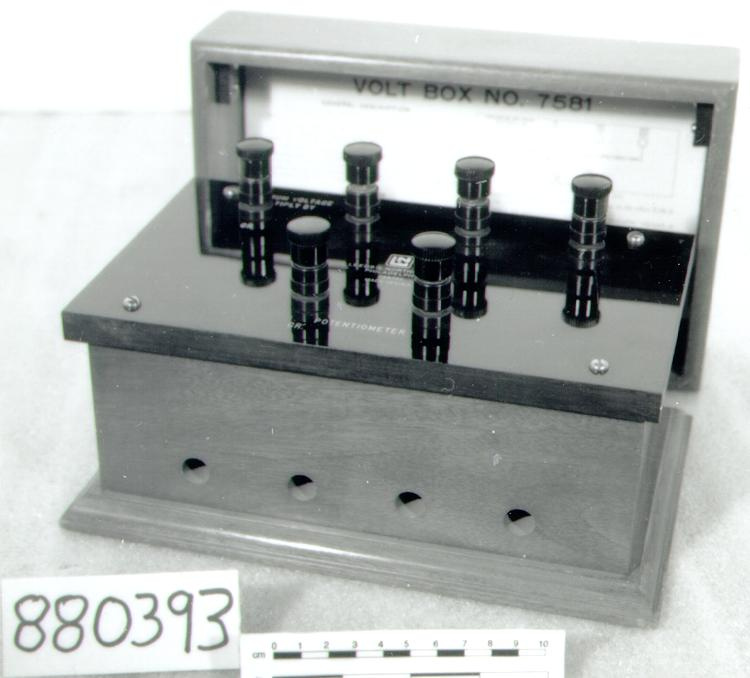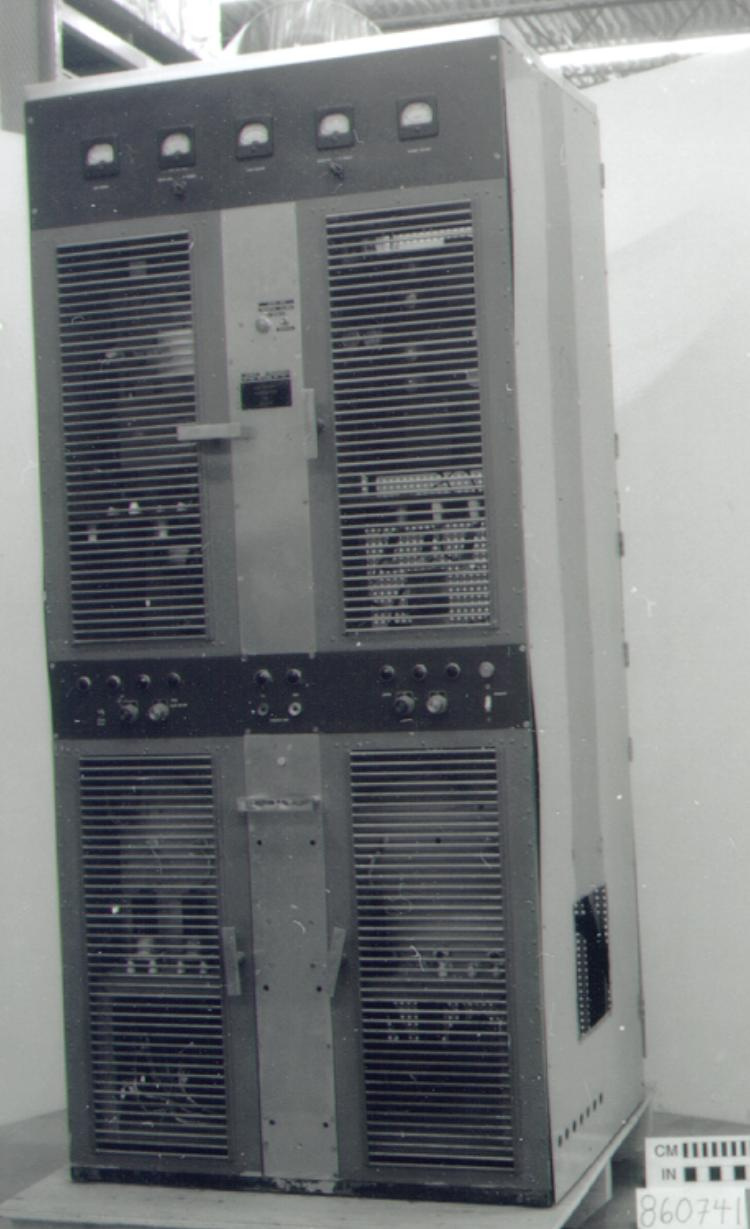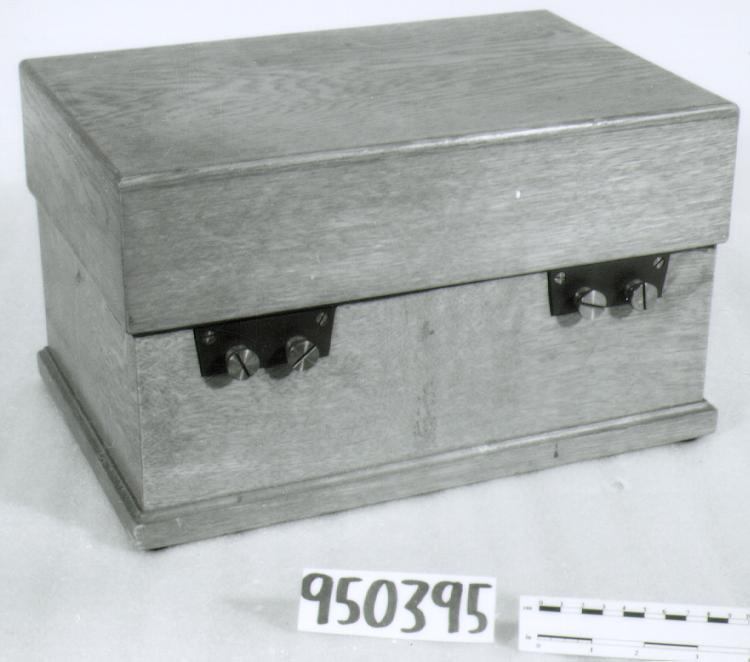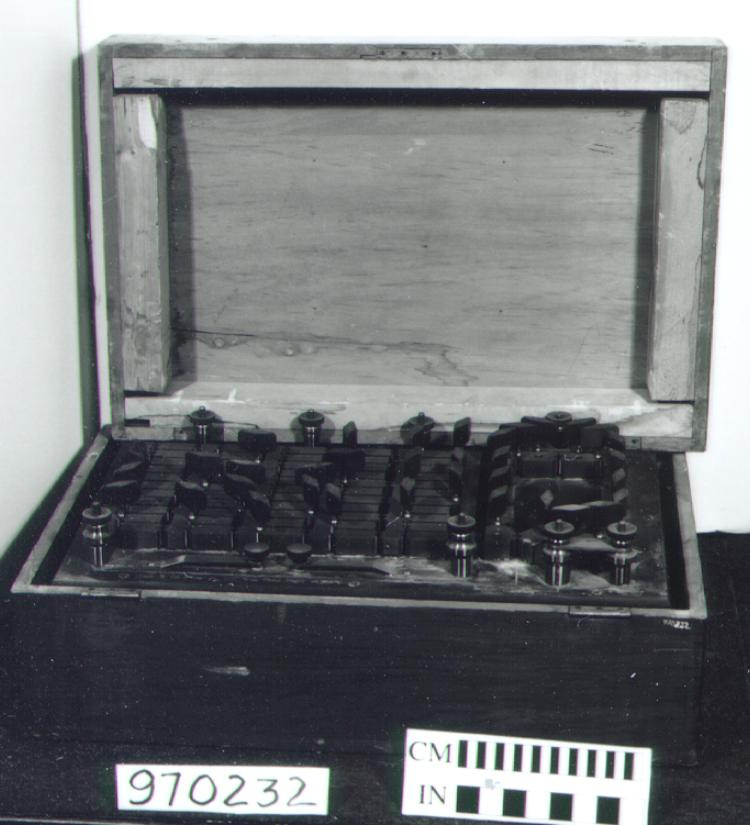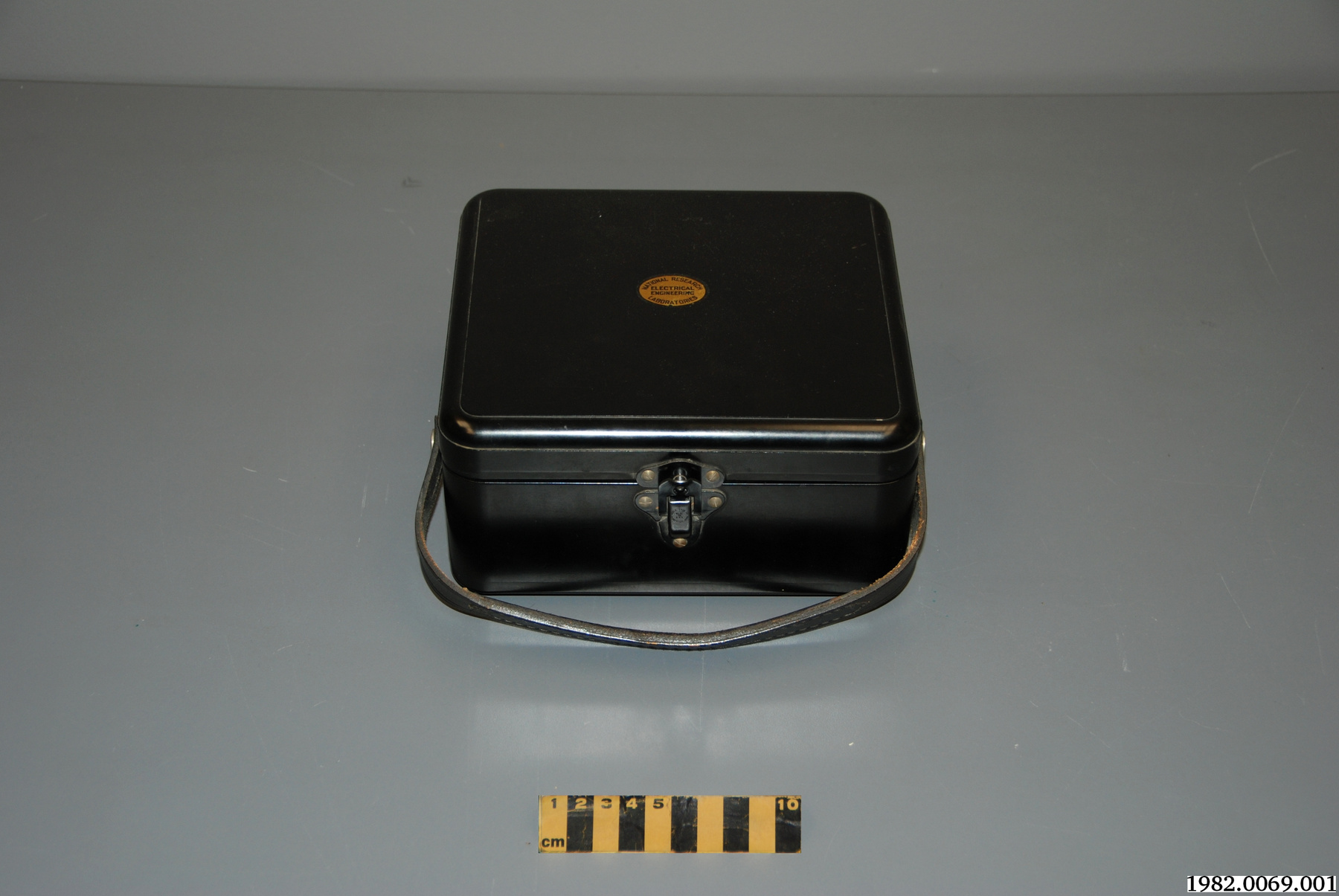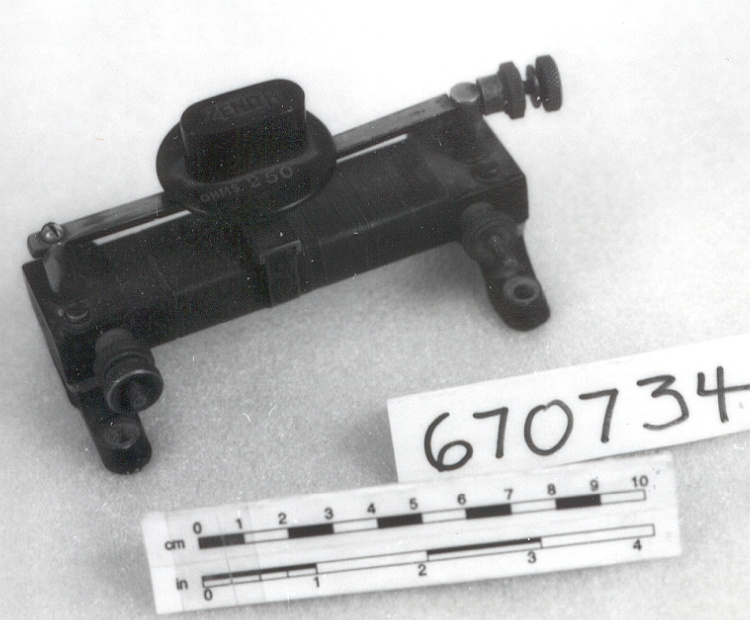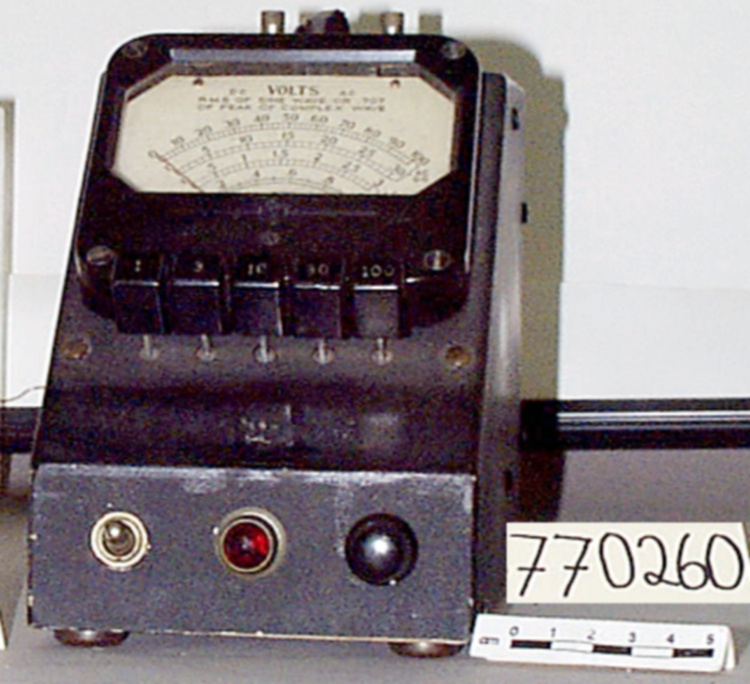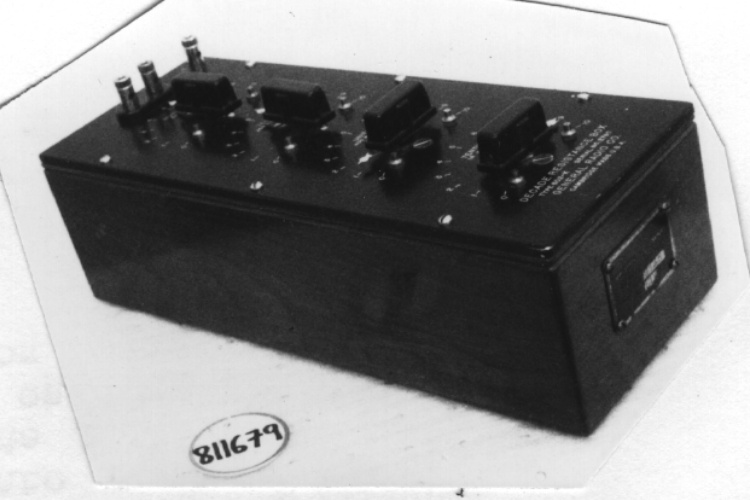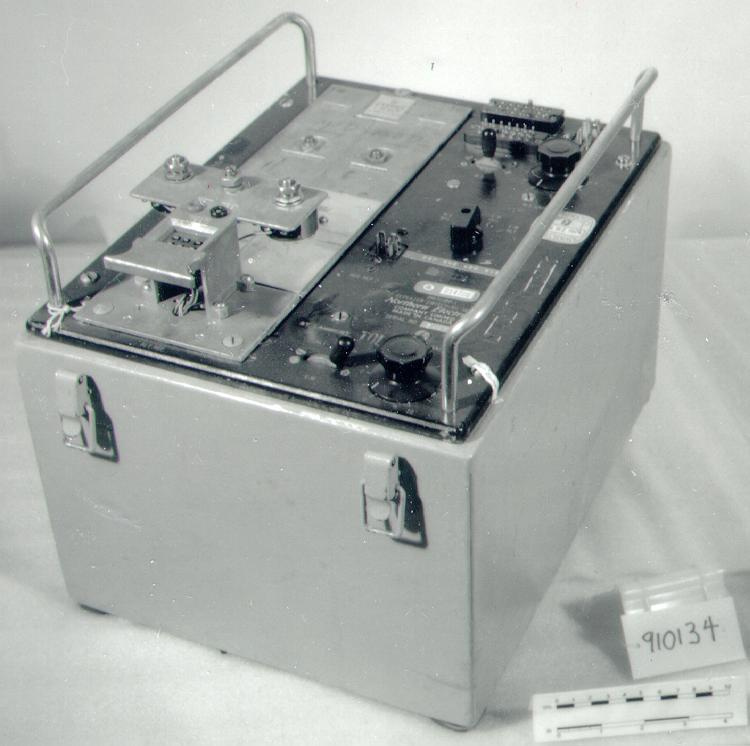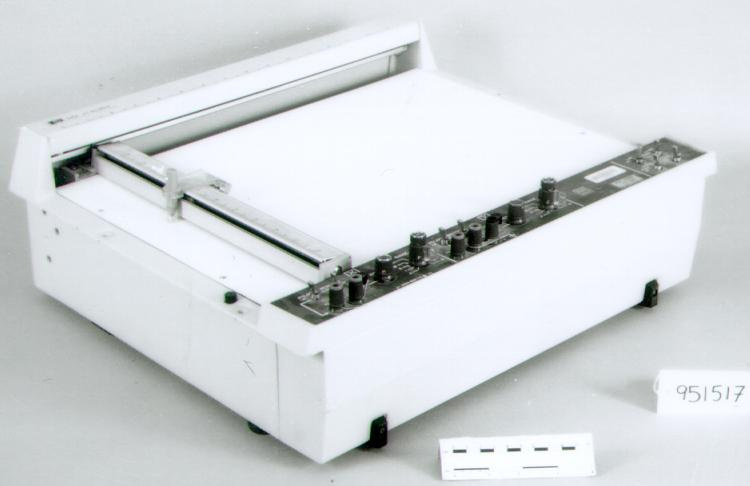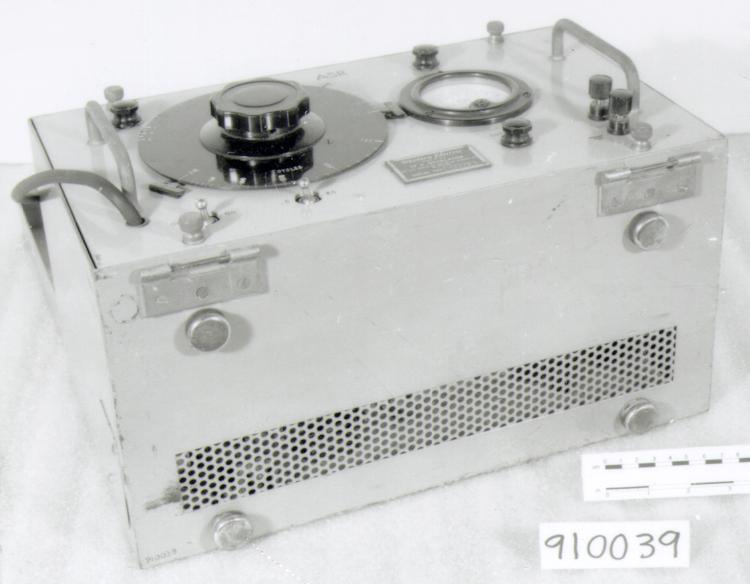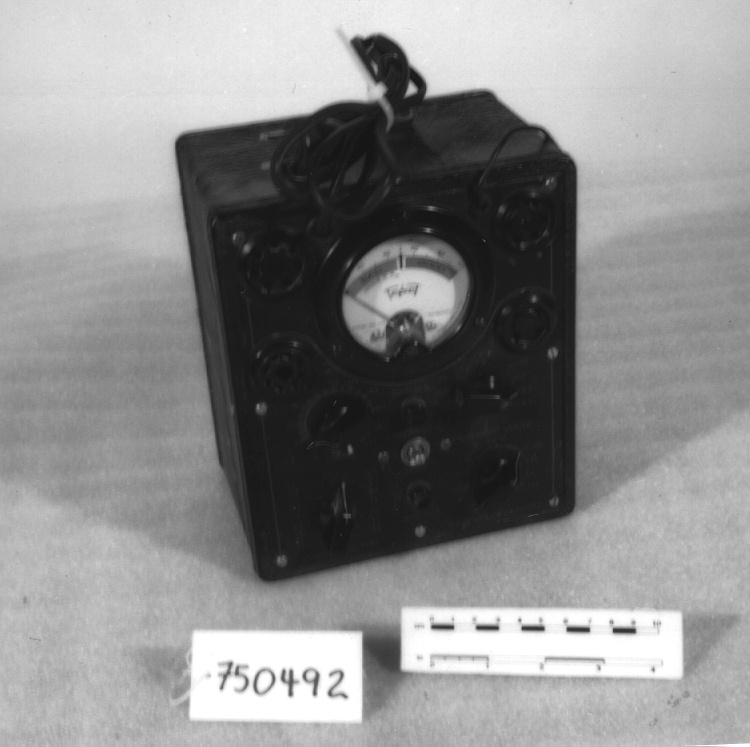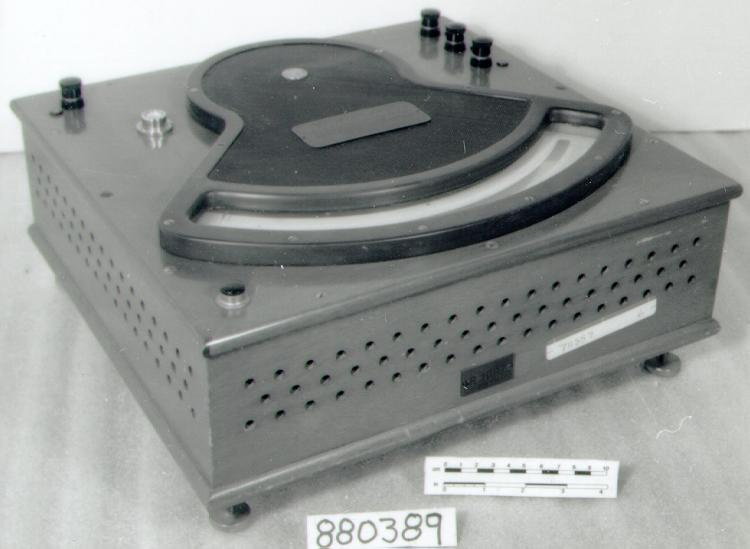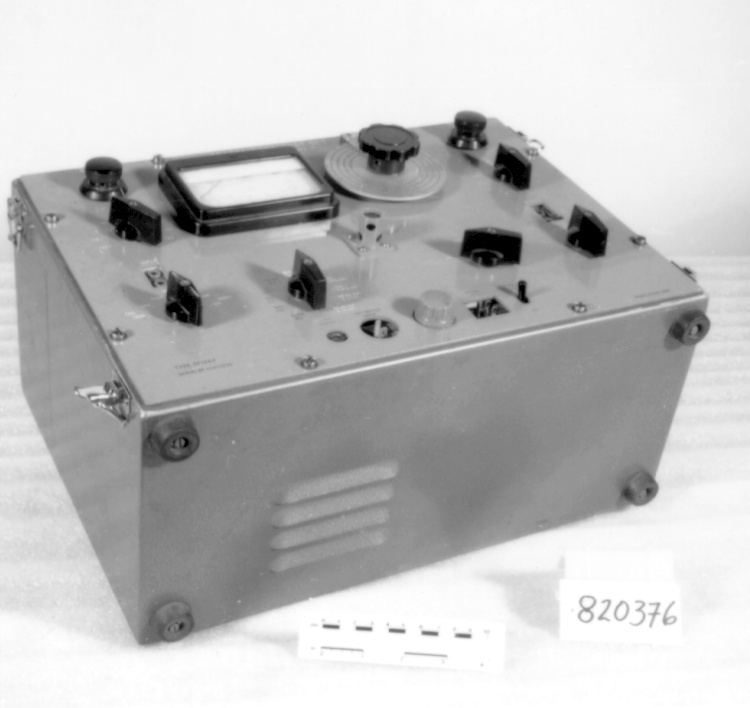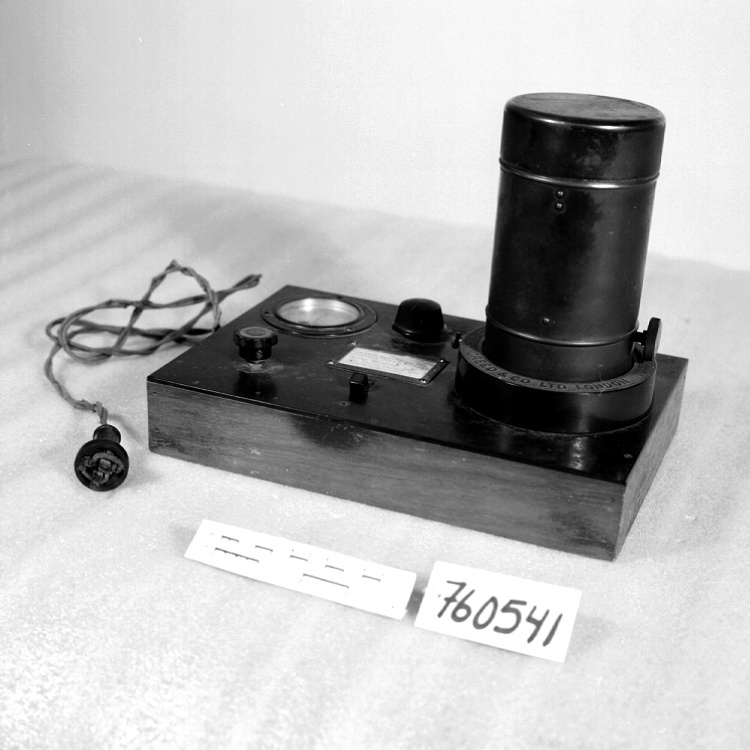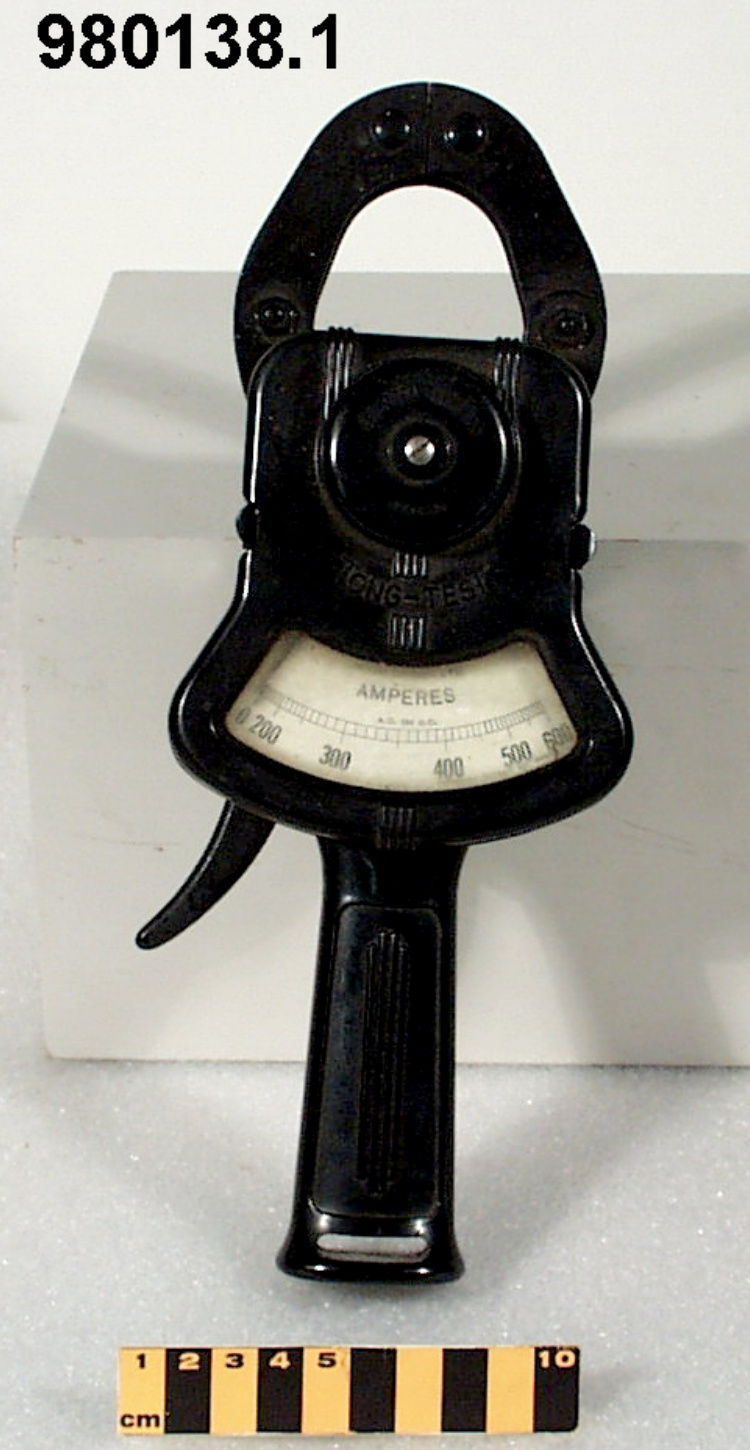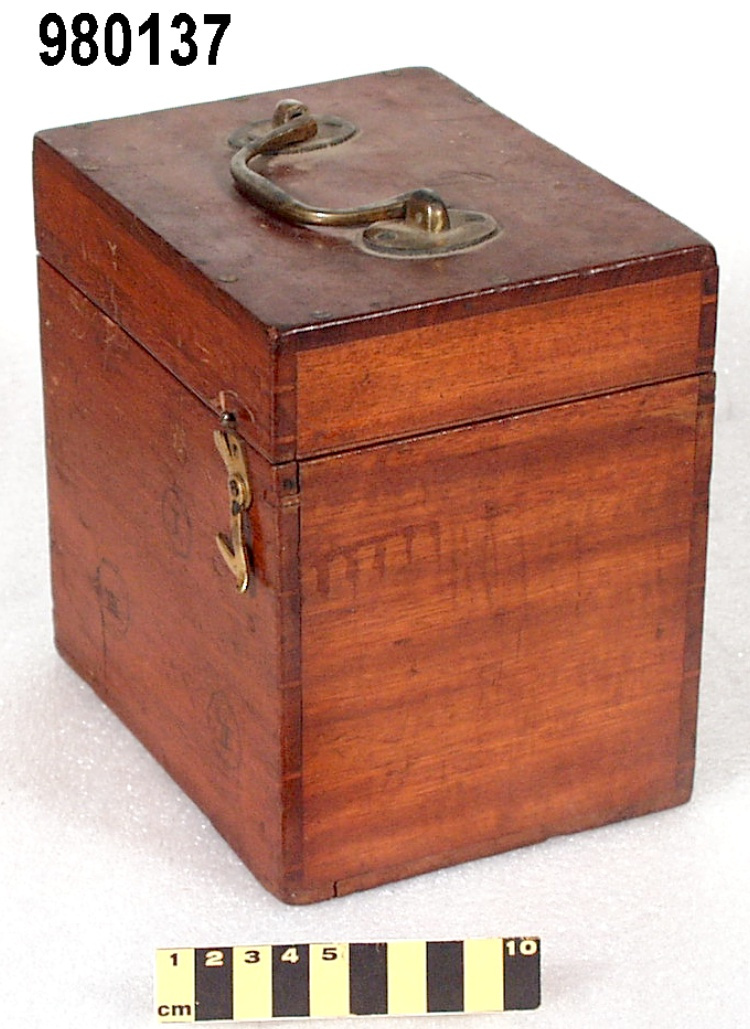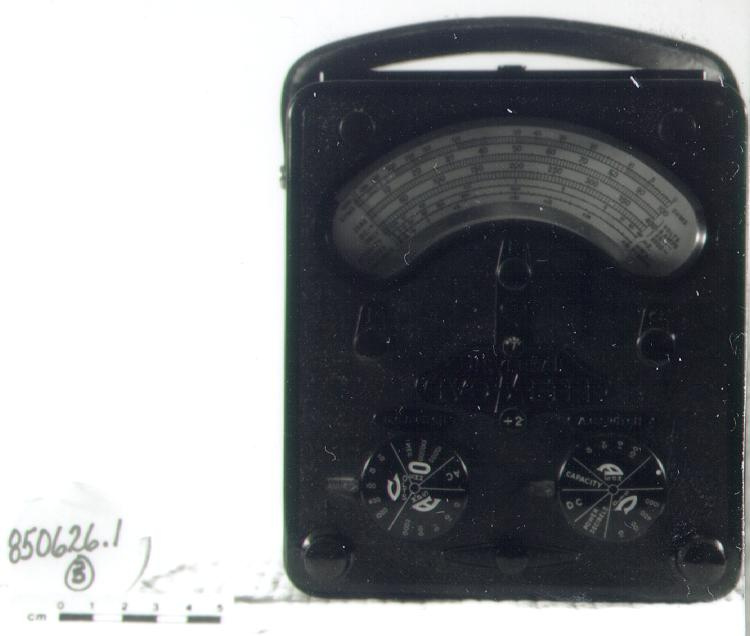Multimètre
Utiliser cette image
Puis-je réutiliser cette image sans autorisation? Oui
Les images sur le portail de la collection d’Ingenium ont la licence Creative Commons suivante :
Copyright Ingenium / CC BY-NC-ND (Attribution-NonCommercial 4.0 International (CC BY-NC 4.0)
ATTRIBUER CETTE IMAGE
Ingenium,
1985.0626.001
Permalien:
Ingenium diffuse cette image sous le cadre de licence Creative Commons et encourage son téléchargement et sa réutilisation à des fins non commerciales. Veuillez mentionner Ingenium et citer le numéro de l’artefact.
TÉLÉCHARGER L’IMAGEACHETER CETTE IMAGE
Cette image peut être utilisée gratuitement pour des fins non commerciales.
Pour un usage commercial, veuillez consulter nos frais de reproduction et communiquer avec nous pour acheter l’image.
- TYPE D’OBJET
- PORTABLE/AC DC
- DATE
- 1950–1959
- NUMÉRO DE L’ARTEFACT
- 1985.0626.001
- FABRICANT
- Automatic Coil Winder & Electrical Equipment Co. Ltd.
- MODÈLE
- UNIVERSAL AVOMETER 7
- EMPLACEMENT
- London, England
Plus d’information
Renseignements généraux
- Nº de série
- 34764-A-952
- Nº de partie
- 1
- Nombre total de parties
- 3
- Ou
- S/O
- Brevets
- S/O
- Description générale
- Metal casing/leather carrying strap/plexiglass readout window/backlite control knobs.
Dimensions
Remarque : Cette information reflète la taille générale pour l’entreposage et ne représente pas nécessairement les véritables dimensions de l’objet.
- Longueur
- 27,0 cm
- Largeur
- 25,0 cm
- Hauteur
- 17,0 cm
- Épaisseur
- S/O
- Poids
- S/O
- Diamètre
- S/O
- Volume
- S/O
Lexique
- Groupe
- Communications
- Catégorie
- Radio
- Sous-catégorie
- S/O
Fabricant
- Ou
- Avo
- Pays
- England
- État/province
- Inconnu
- Ville
- London
Contexte
- Pays
- Canada
- État/province
- Ontario
- Période
- Used 1950's to 1980's
- Canada
-
Used in Canada - Fonction
-
Used to make a variety of electrical measurements in testing radios and other equipment. - Technique
-
Example of good quality British made multimeter of the period and one of the major manufacturers of this type of equipment. - Notes sur la région
-
Inconnu
Détails
- Marques
- 'MODEL/ 7/ UNIVERSAL/ AVOMETER' appears on casing front. All dials labelled. 'ACCURACY B-S-1 NO. 34764-A-952 PART NO. 10945-19' printed on face. Four scales, all labelled. Panel on back of casing bears following info.: ‘UNIVERSAL AVOMETER MODEL 7 WORKING INSTRUCTIONS, IMPORTANT. GENERAL. To ensure accurate readings, use the instrument face upwards. If necessary, set the pointer to D.C. zero by means of the screw in the panel. The A.C. switch must be at its D.C. position for this operation. On A.C. ranges the pointer is automatically displaced from D.C. zero to correct for internal losses, the 1½V cell being employed for this purpose. D.C. tests can only be carried out with the D.C. switch set to the appropriate range and with the D.C. switch set to the appropriate range and with the A.C. switch at its D.C. position. The reverse procedure applies to A.C. tests. To prevent damage to the instrument, see that it is set to a suitable range before connecting to the circuit under test. When in doubt set to the highest range and work downwards, there being no necessity to disconnect the leads. Do not however, switch off by rotating the switches to blank positions. The automatic cut-out completely protects the instrument in the case of normal overload by interrupting the main circuit. If it operates DO NOT re-set with the leads connected to the supply, but ensure that the fault is cleared before continuing tests. Since mechanical shock may cause the cut-out to trip, handle the meter carefully. Do not lubricate the plunger. / The___ 2 button is for use when measuring current and voltage only, and if the meter is on a normal range, it should never be pressed when the pointer shows more than half scale deflection. The resistance of the meter is the same on the press button range as on the normal one. Press the button firmly./ KNOB "Q" MUST ALWAYS BE REPLACED IN NORMAL POSITION AFTER USE./ A copper oxide rectifier is incorporated for A.C. measurements and the instrument calibrated for sinusoidal input (form factor 1.11.). Special care should be exercised when using high voltages. If the meter is used to measure voltage calling for an external multiplier, or to measure current in such a circuit, it must be used at the earth potential end./ AMPERES [underlined]: Ten ranges D.C. and eight ranges A.C. are incorporated. These ranges may be extended by the use of external shunts (100mV) or transformers (secondary to suit a current range)./ VOLTS [underlined]: Ten ranges D.C. In addition the 2mA range can be used as one of 100mV or 50mV with the button pressed. Eight ranges A.C. suitable for out-put measurements at audio frequency. All normal ranges of D.C. and A.C. except 10V. A.C. consume 2mA at full scale deflection (500 ohms per volt) or fmA at full scale for press button ranges (1,000 ohms per volt) the current being proportionally less for smaller deflections. The 10V A.C. and 5V A.C. ranges consume 20 and 10mA respectively at full scale deflection./ OHMS [underlined]: Three self-contained ranges and two using external voltage. The press button should not be used on resistance ranges./ 10,000 and 100,000 ohms ranges [underlined]: Before commencing tests on these ranges, it is advisable to check, and if necessary, to adjust for both voltage and resistance of the 1½V cell by means of the potentiometer "P" and resistance "R": (1) Connect leads together. (2) With switch at 100,000 ohms position adjust by "P" so that the pointer indicates approximately 0 ohms. (3) Adjust by "R" when on 10,000 ohms range until pointer takes up the same position irrespective of whether the switch is on the 10,000 or 100,000 ohms range. (4) Set accurately to zero ohms by means of "P"./ MEGOHM RANGE [underlined]: Before testing on this range, it is necessary to adjust as follows: (1) Connect leads together. (2) Set switch to 1 megohm position. (3) Raise adjusting knob "Q" and rotate in a clockwise direction until the pointer indicates 0 ohms. After carrying out tests on this range, return knob "Q" to its normal position in the panel./ BATTERY REPLACEMENT [underlined]: If it is impossible to obtain zero ohms setting, the internal batteries should be replaced, a 1½V cell for the two lower ranges and two 4½V batteries for the high range./ 10 & 40 MEGOHM RANGES [underlined]: These ranges are available by using the 100 or 400V A.C. or D.C. ranges respectively in conjunction with a suitable source of voltage. It is safe and correct to use a voltage between 2/3 to 2½ times that of the range in use, adjustment for zero on the ohms scale being carried out by means of "Q" knob. After adjusting for voltage the test resistance is connected in series, its value being that shown on the ohms scale multiplied by 1,000 or 4,000 as the case may be. With these high voltages the circuit should not be handled while "live". Return "Q" knob to its normal position in panel after tests./ CAPACITY [underlined]: 50 ~ A.C. mains supply from 65 to 250V should be connected to the meter when set to its capacity range, and the "Q" knob should be operated as in the megohm range, to bring the pointer to its infinity capacity position. The unknown condenser should then be connected in series, direct indication of capacity being shown within usual commercial limits of accuracy. Frequencies other than 50 cycles may be used, but this affects the voltage necessary for adjustment. 250V A.C. must not be exceeded. Return "Q" knob to its normal position after tests./ POWER AND DECIBELS [underlined]: This range gives a maximum of 2 watts, the impedance being 5,000 ohms. The corresponding dB scale is calibrated from -15 to +16dB the reference level (O.d.B.) being 50mW. The 10V A.C. and the 100V A.C. ranges can be used as power ranges of 200mW. The impedance being 500 and 50,000 ohms respectively. The A.C. switch position marked with a spot (31.5mA) is for the extension of power and decibels up to 20 watts and +26 d.B. when used in conjunction with external load resistances (see Instructions leaflet M.21)./ POWER FACTOR AND WATTAGE [underlined]: The two sockets marked "P.F." at the top of the panel are for use with the Model & "Power Factor and Wattage Unit". See instruction booklet: THE AUTOMATIC COIL WINDER AND ELECTRICAL EQUIPMENT COMPANY LIMITED. Winder House, Douglas Street, London, S.W.I. The "AVOMETER" is patented in the principal countries throughout the world. British Patent Nos. 200977, 404015, 464867, 476683, 476738. The word "AVOMETER" is our registered Trade Mark. ‘MADE IN ENGLAND'. / ‘412-016-636' incised into upper right of panel.
- Manque
- none
- Fini
- Black crinkle/white lettering on control buttons.
- Décoration
- S/O
FAIRE RÉFÉRENCE À CET OBJET
Si vous souhaitez publier de l’information sur cet objet de collection, veuillez indiquer ce qui suit :
Automatic Coil Winder & Electrical Equipment Co. Ltd., Multimètre, entre 1950–1959, Numéro de l'artefact 1985.0626, Ingenium - Musées des sciences et de l'innovation du Canada, http://collection.ingeniumcanada.org/fr/id/1985.0626.001/
RÉTROACTION
Envoyer une question ou un commentaire sur cet artefact.
Plus comme ceci
